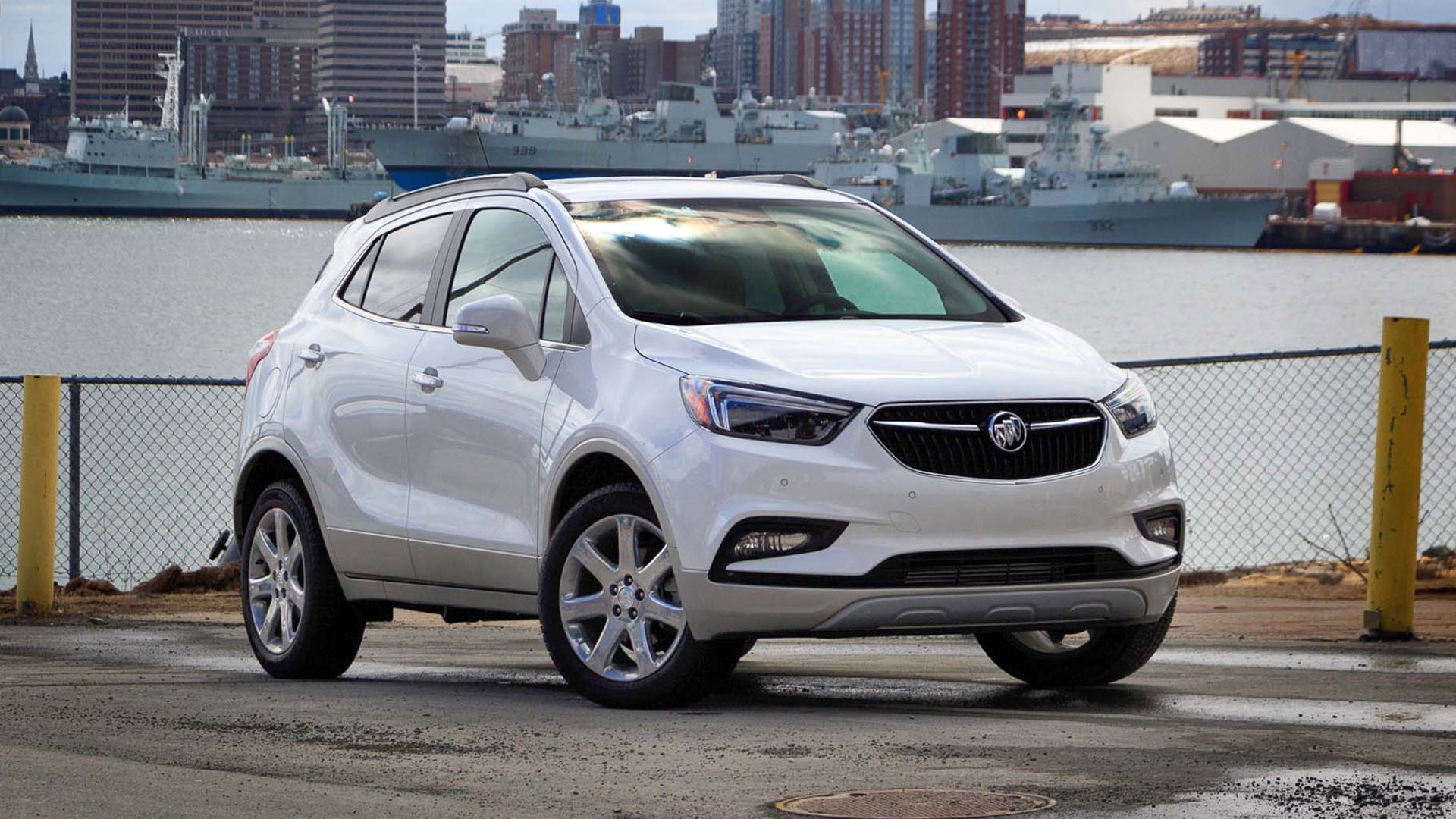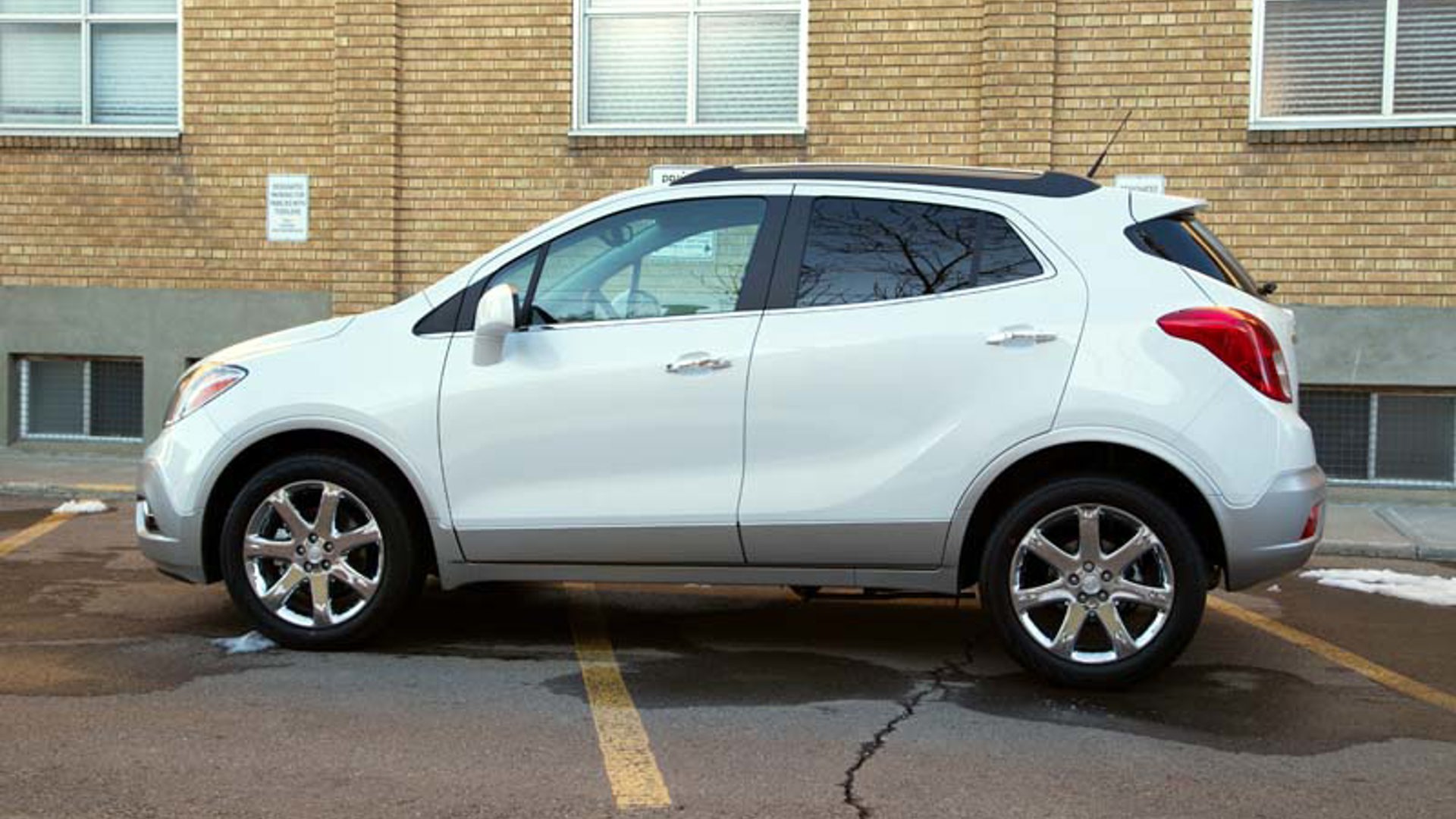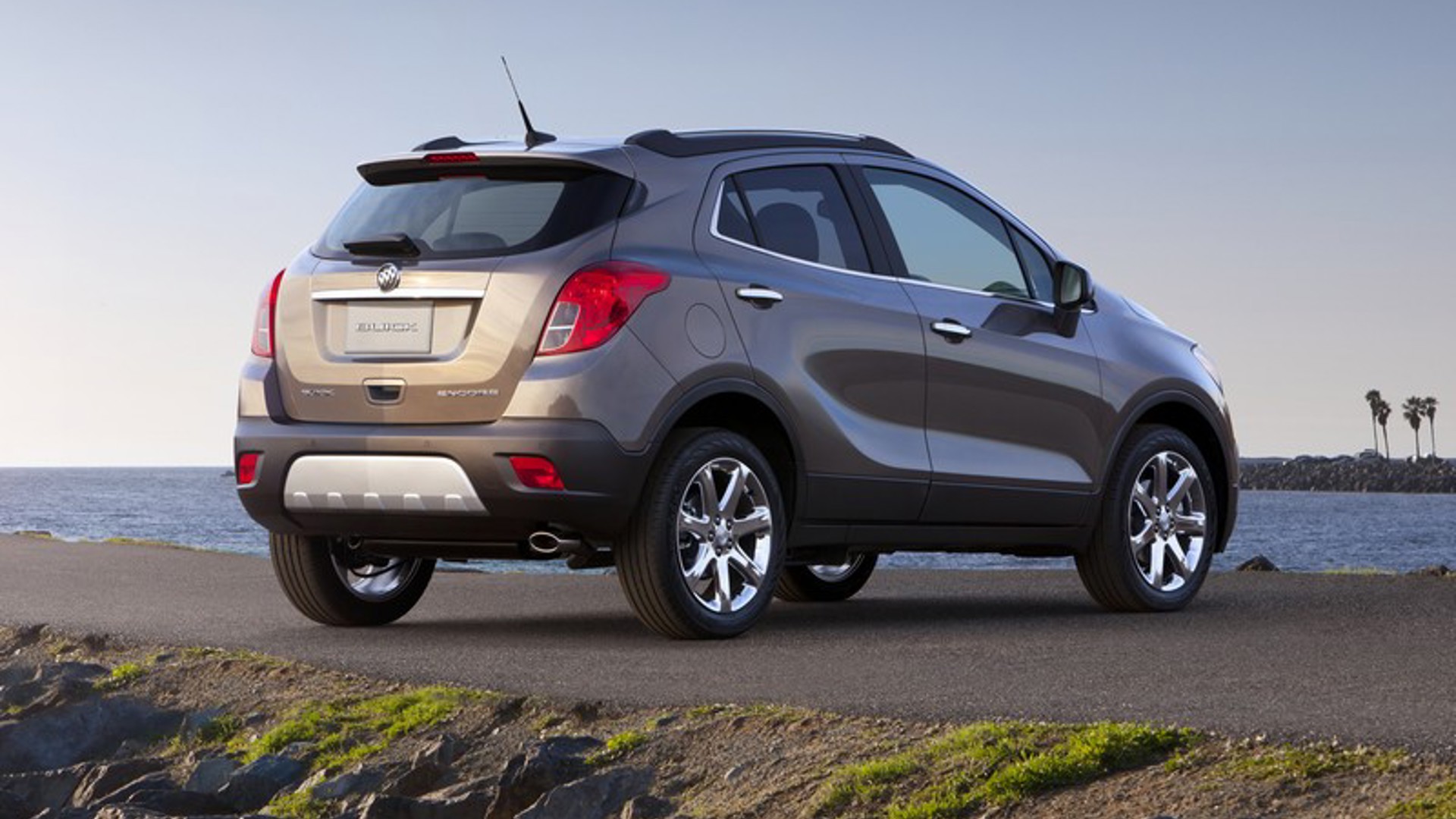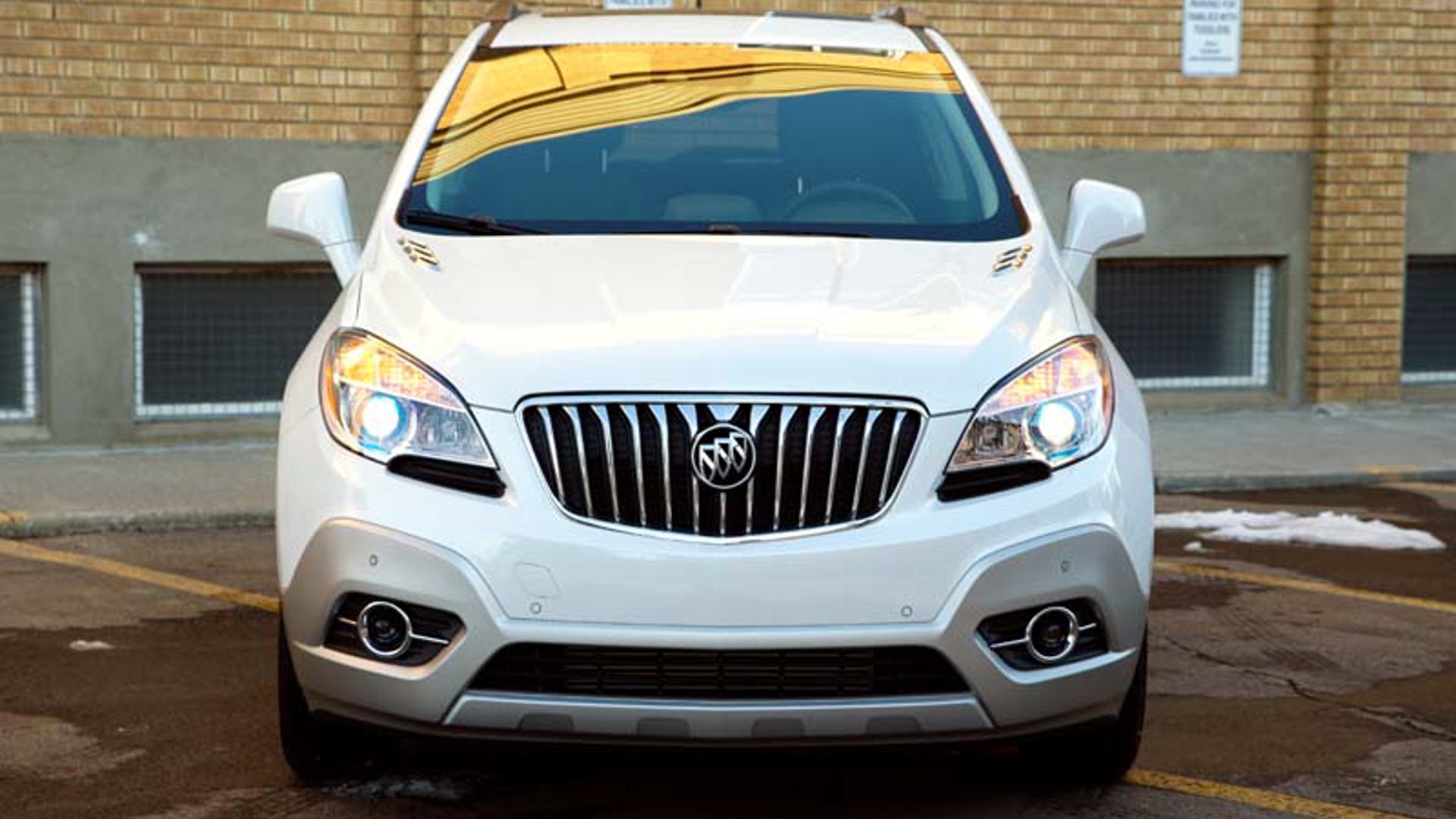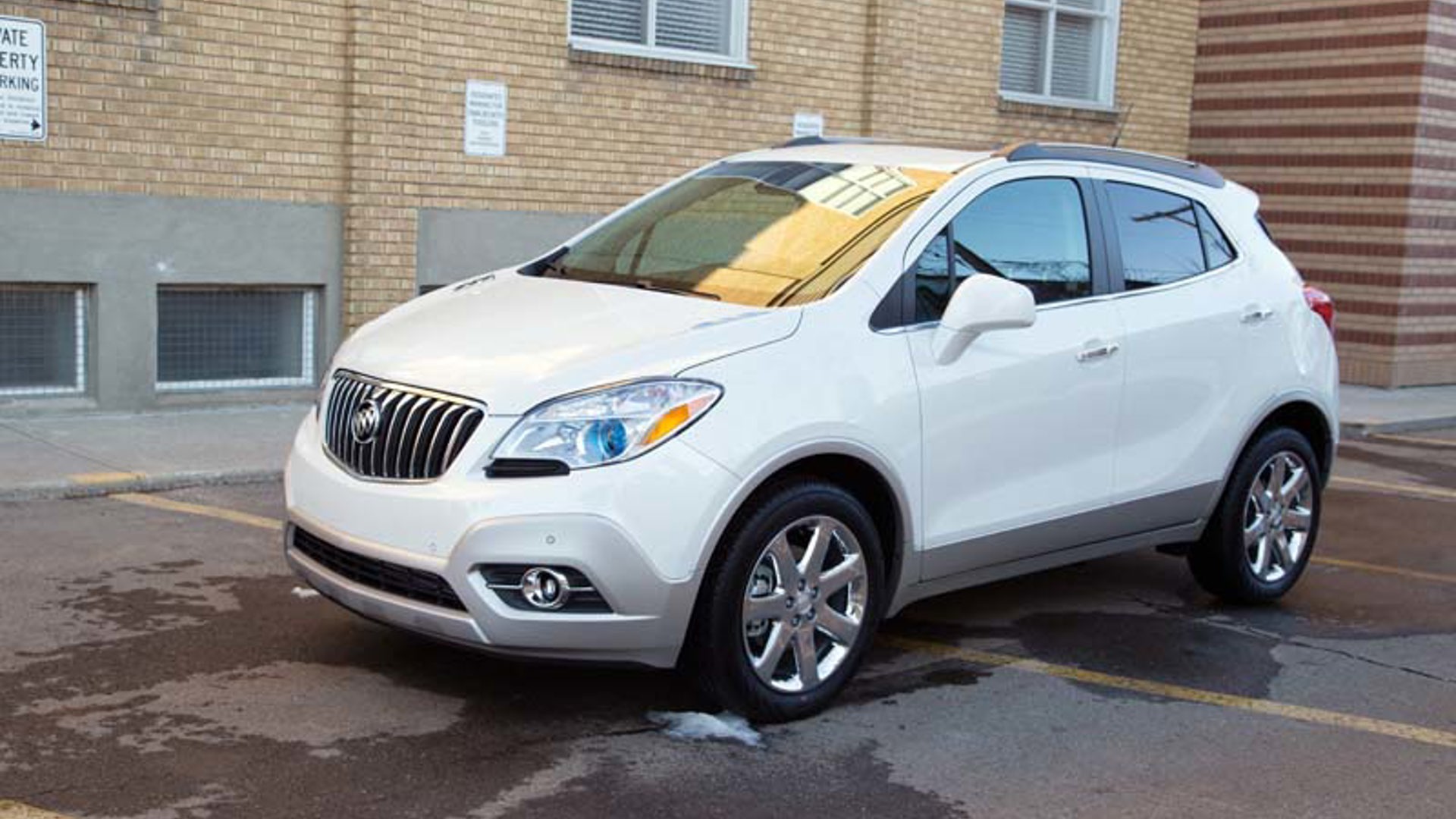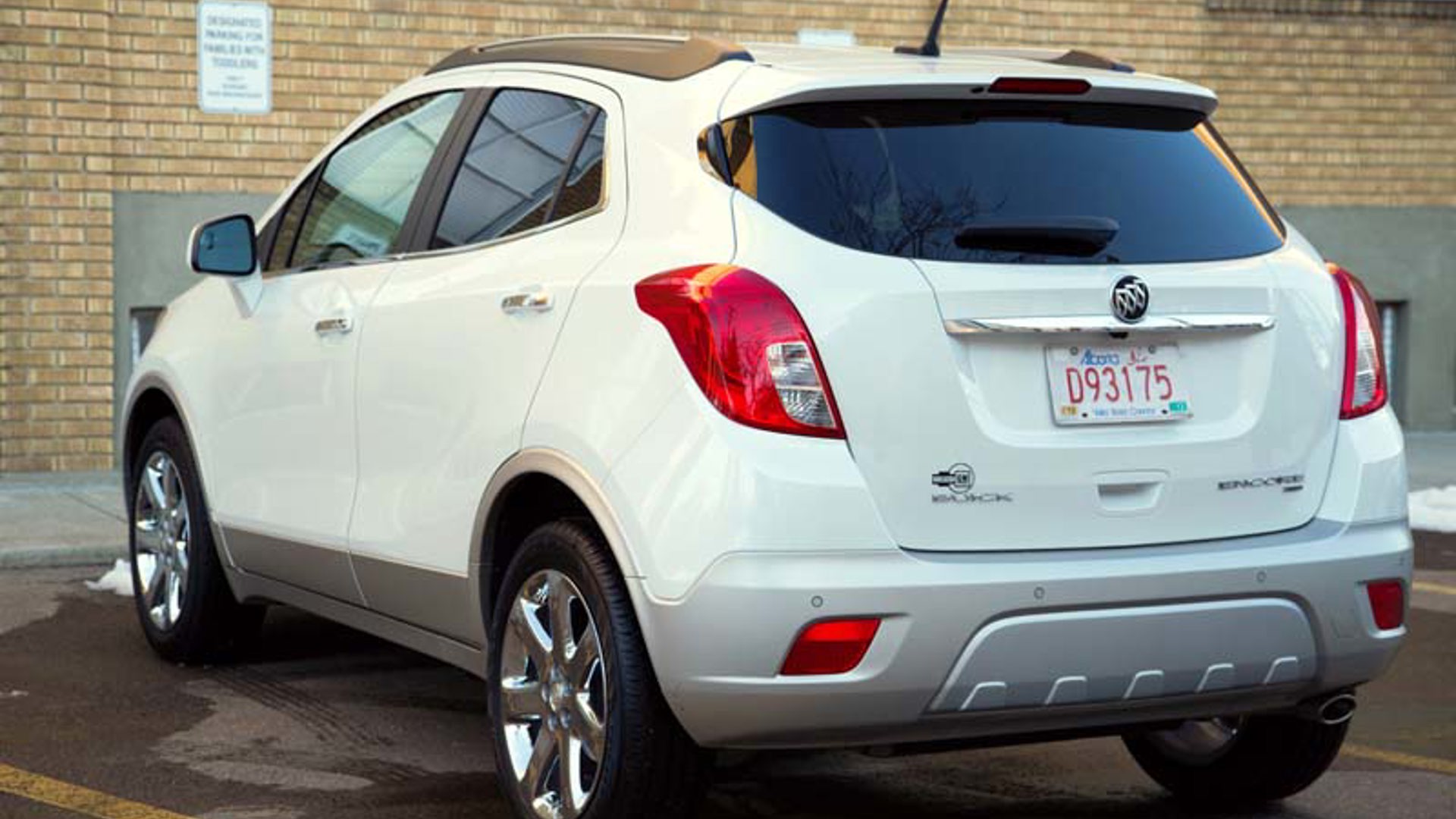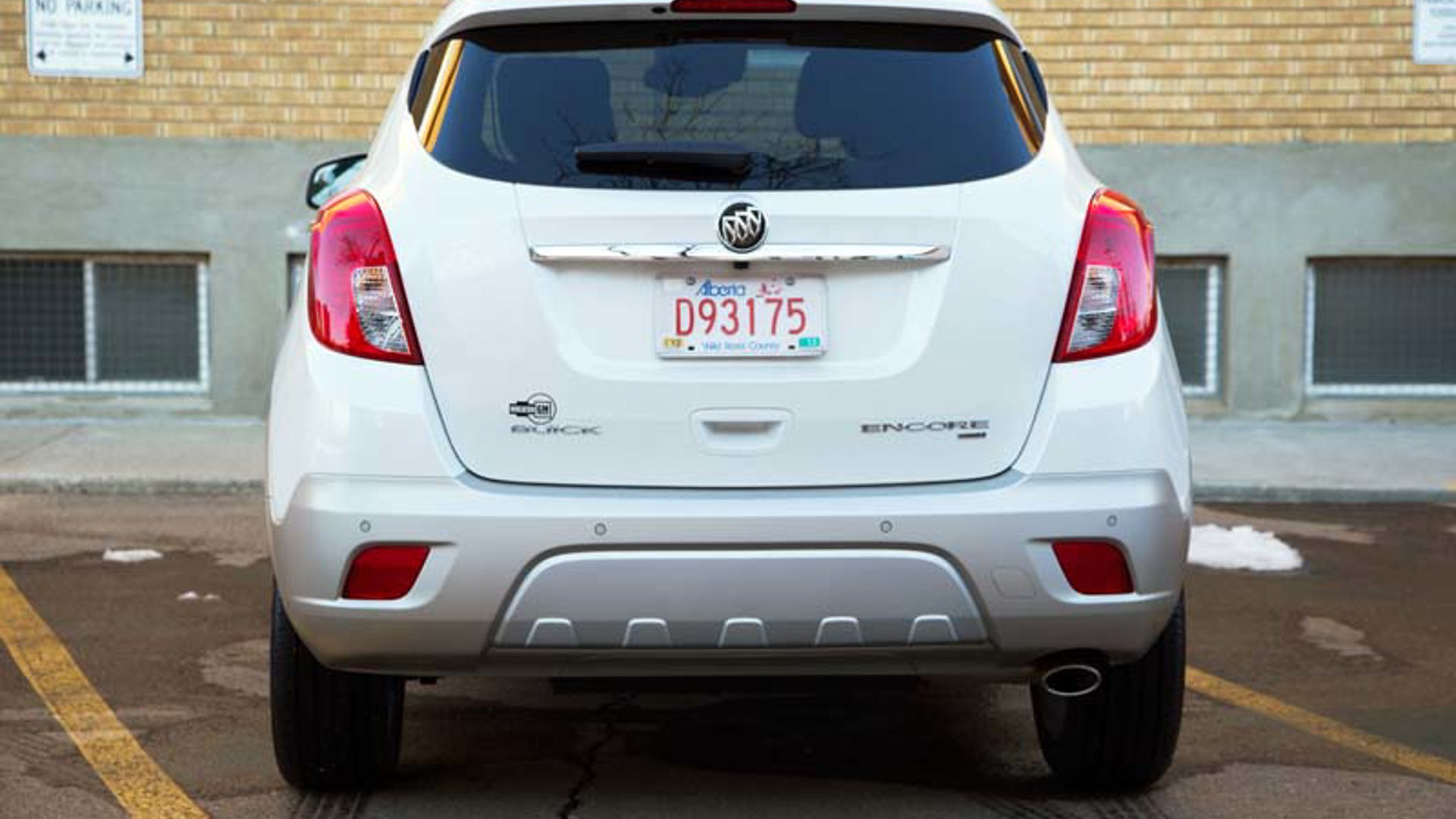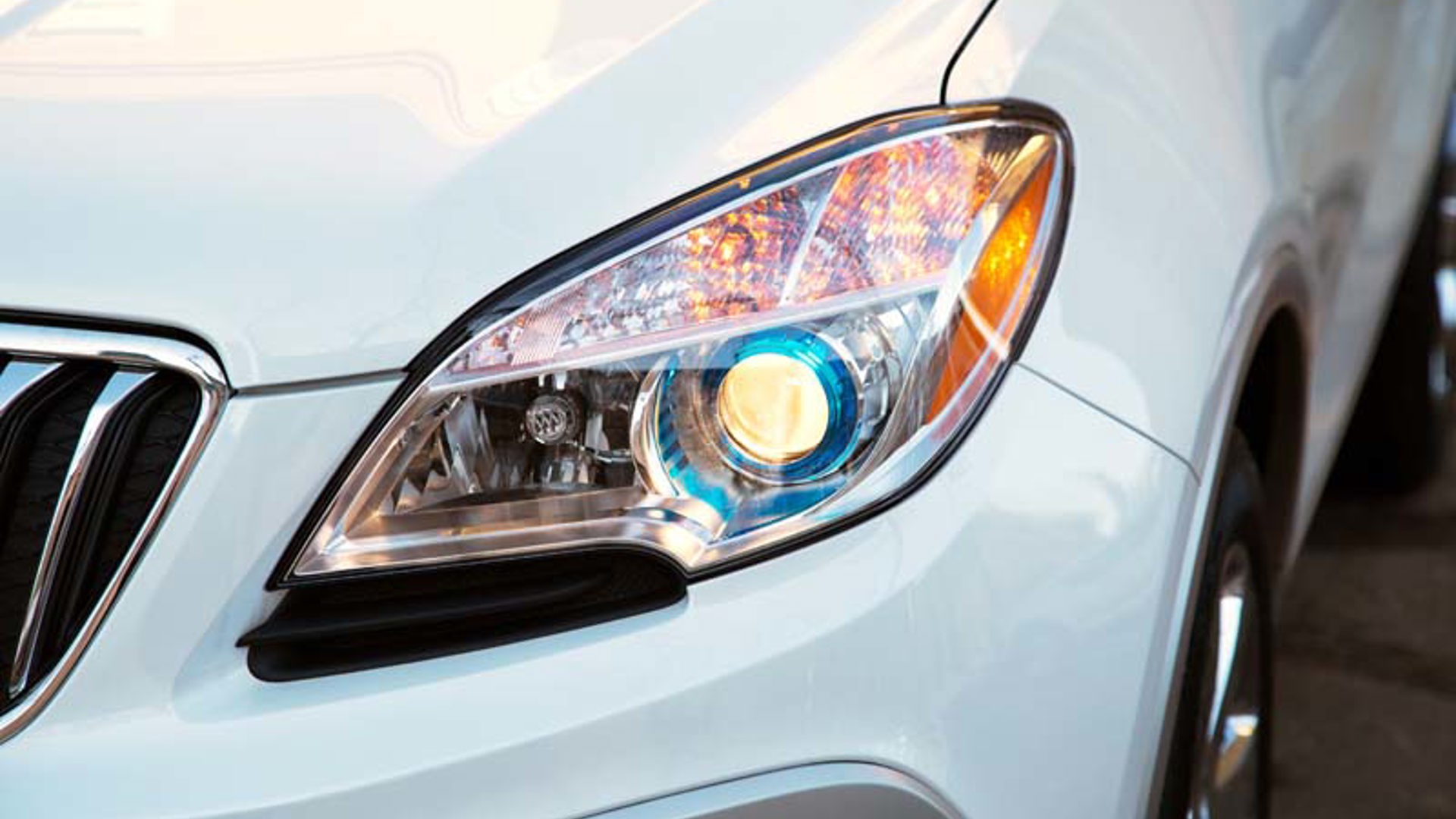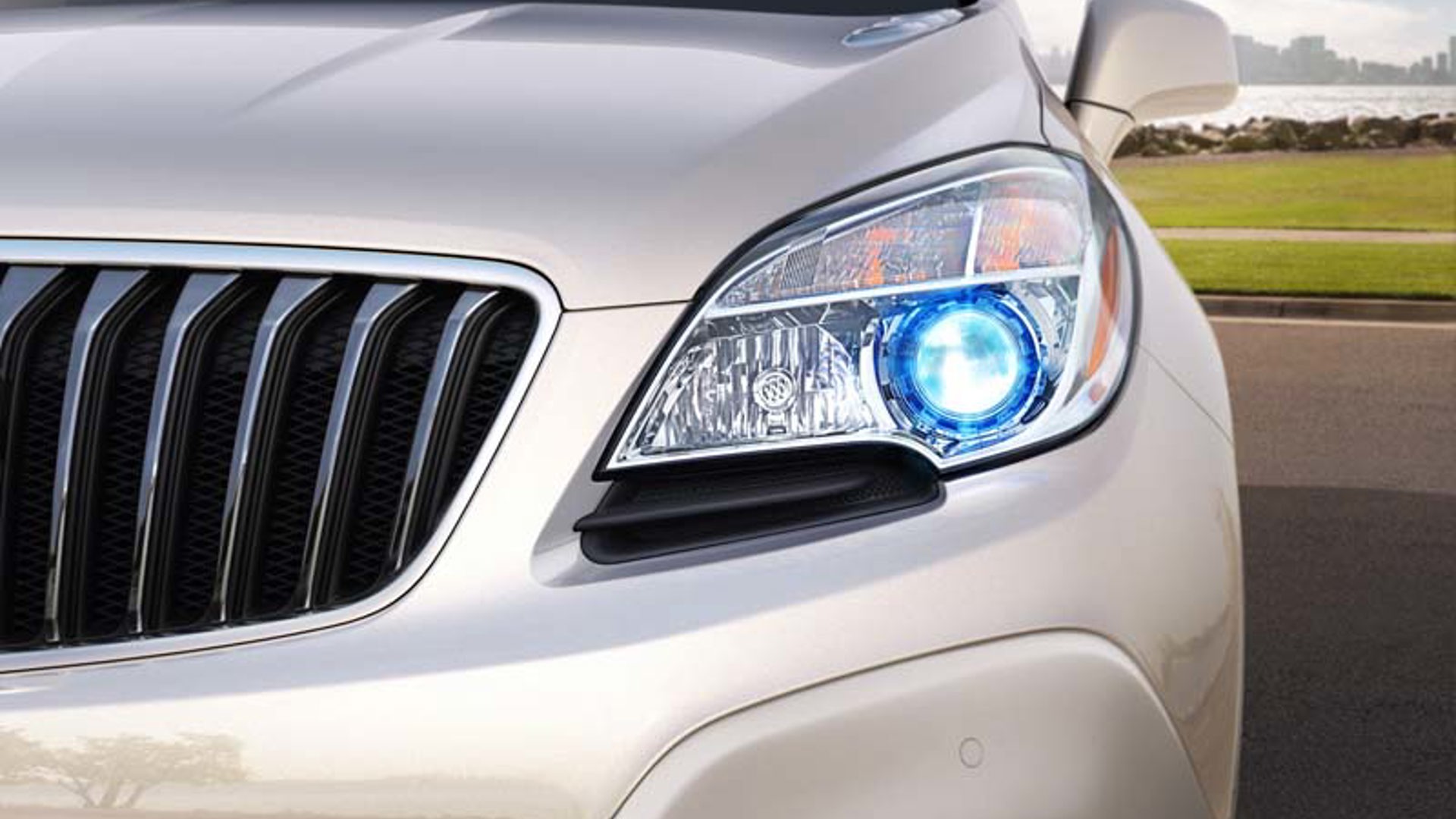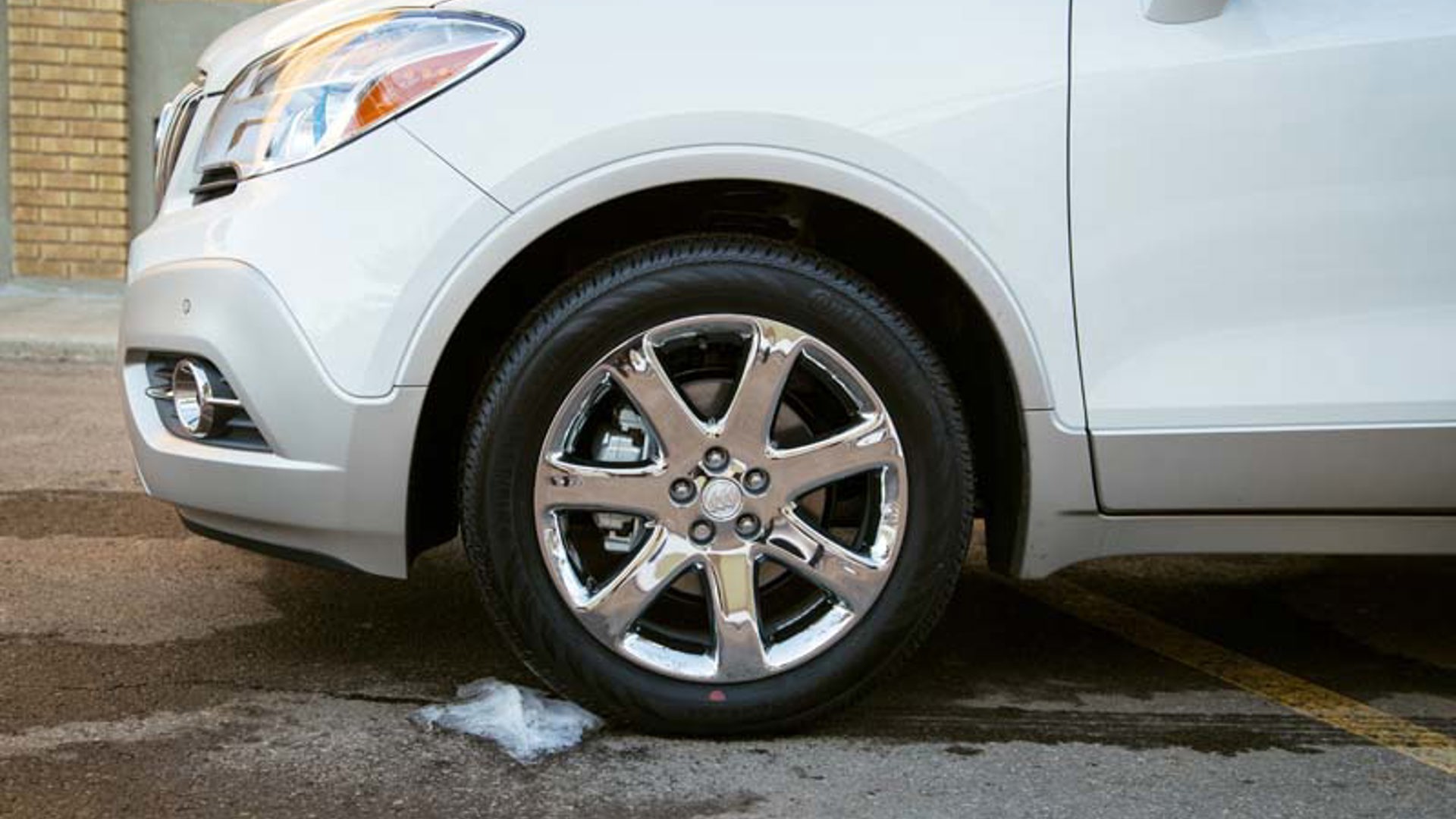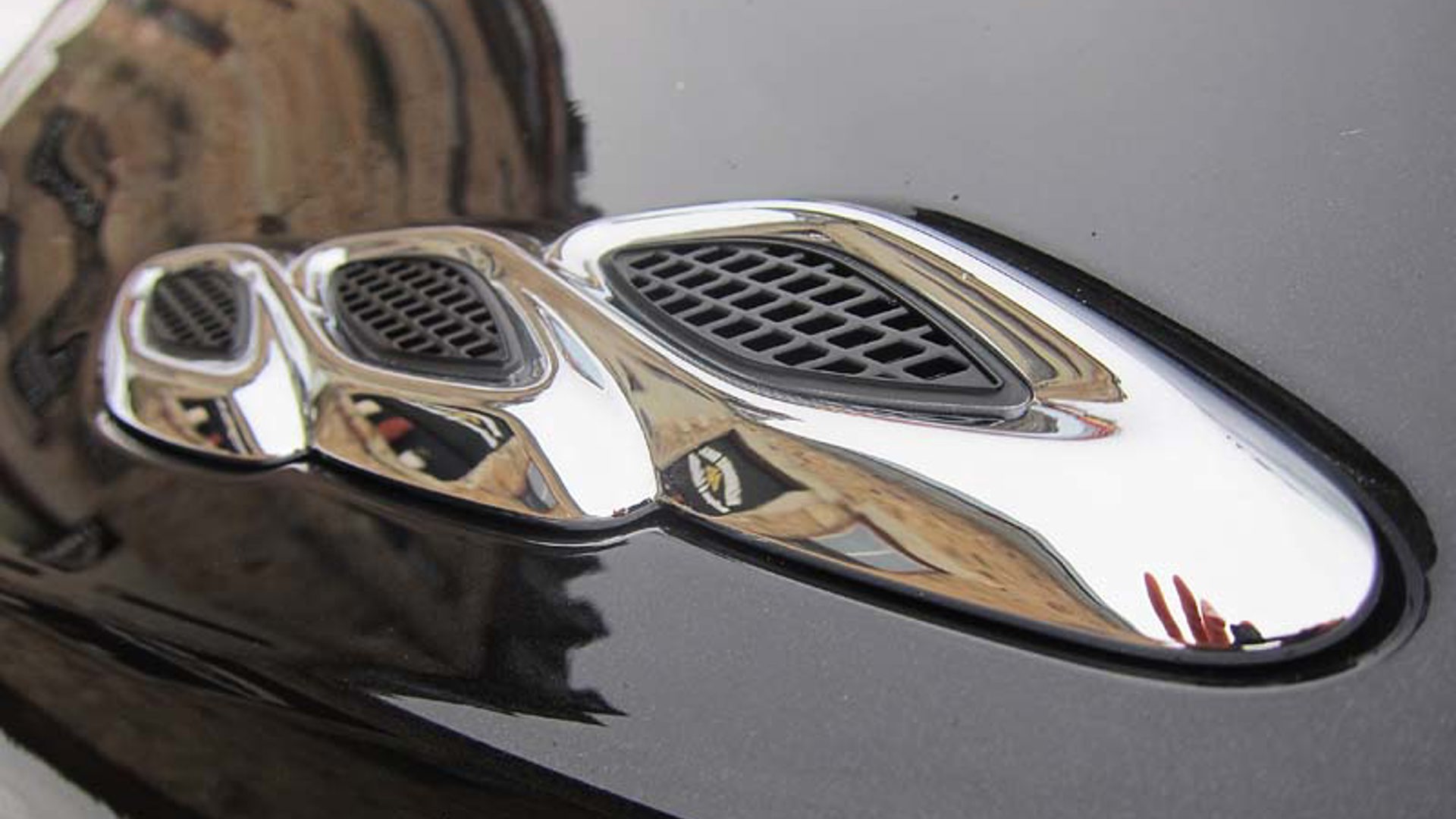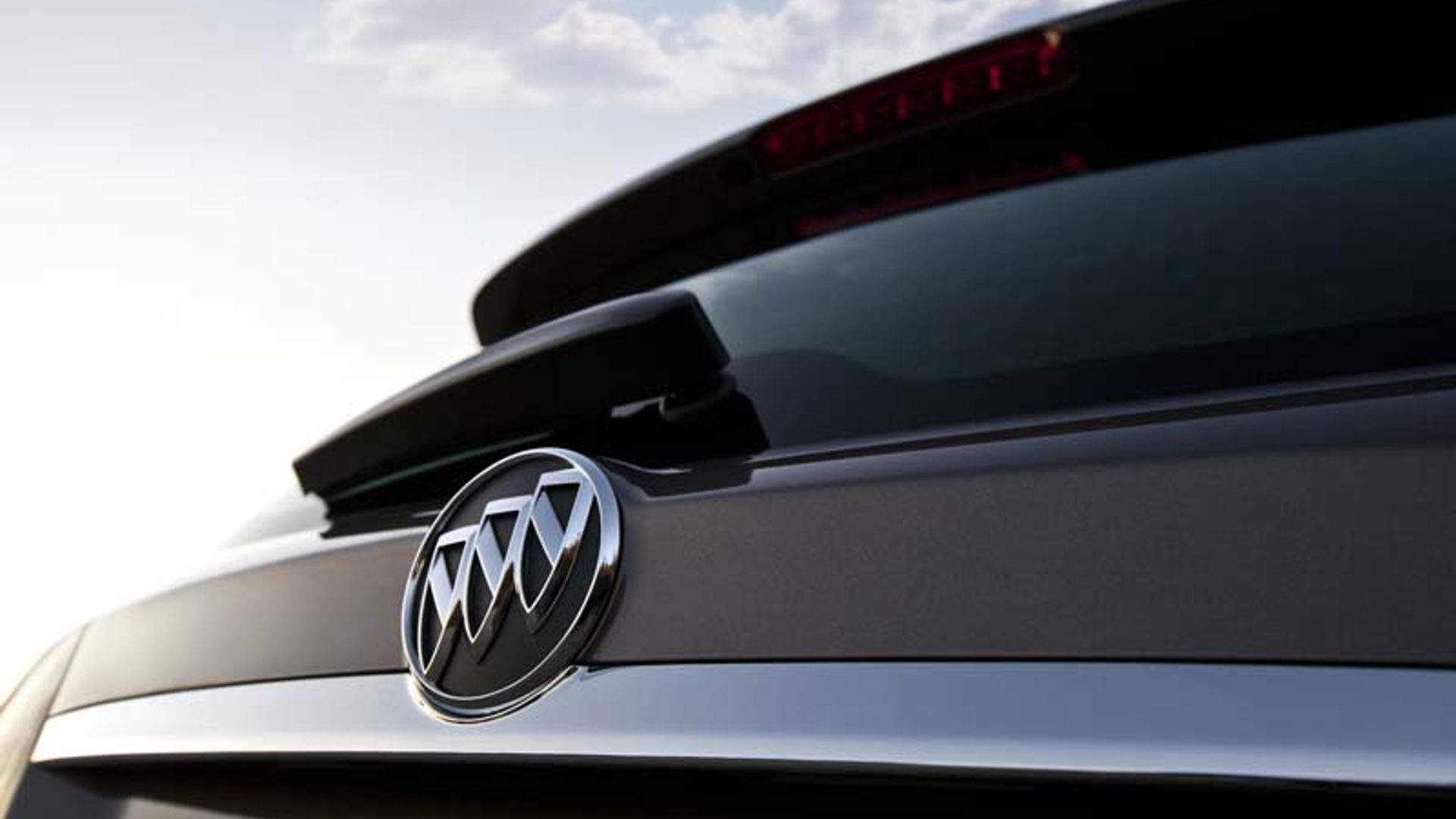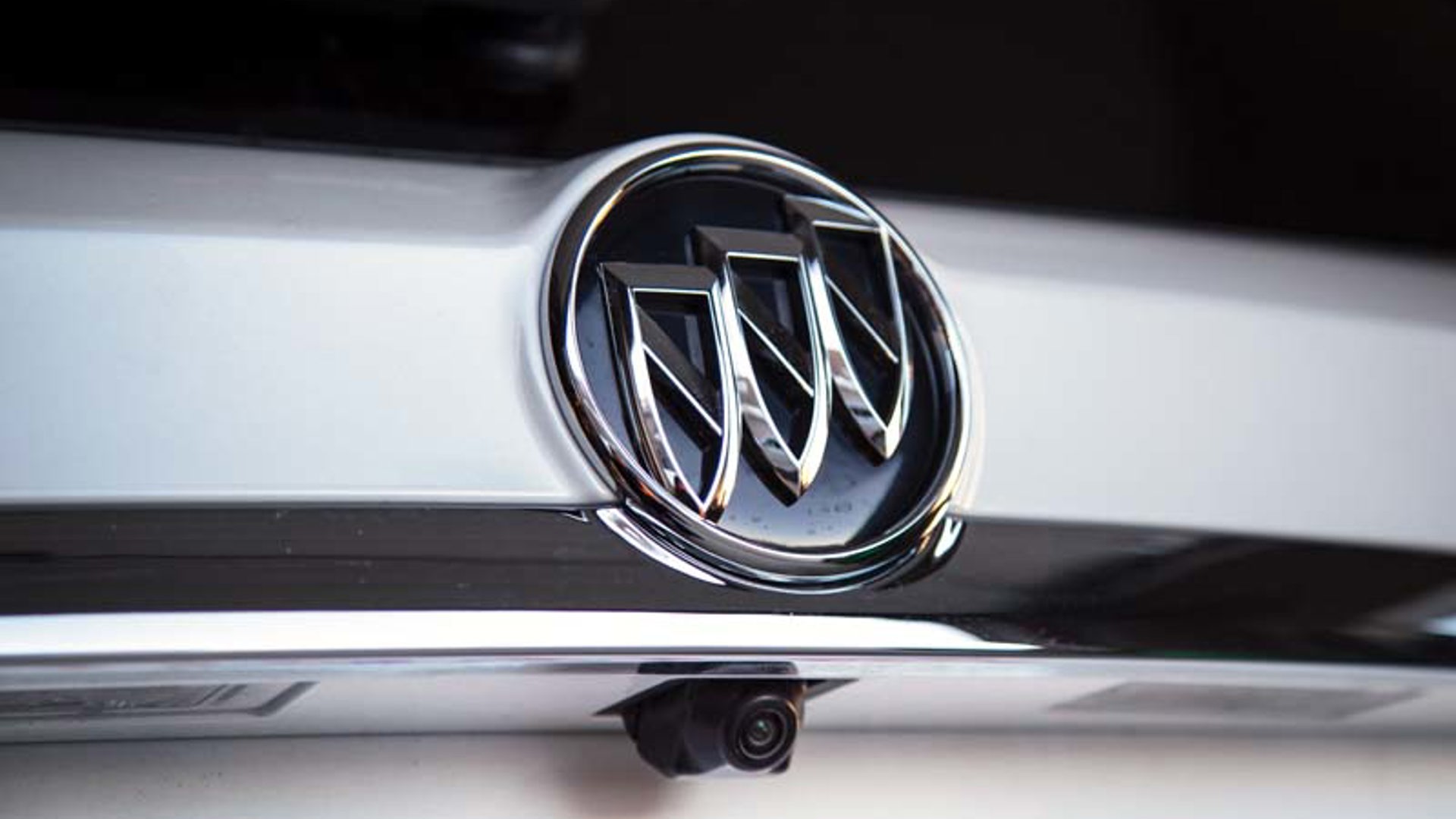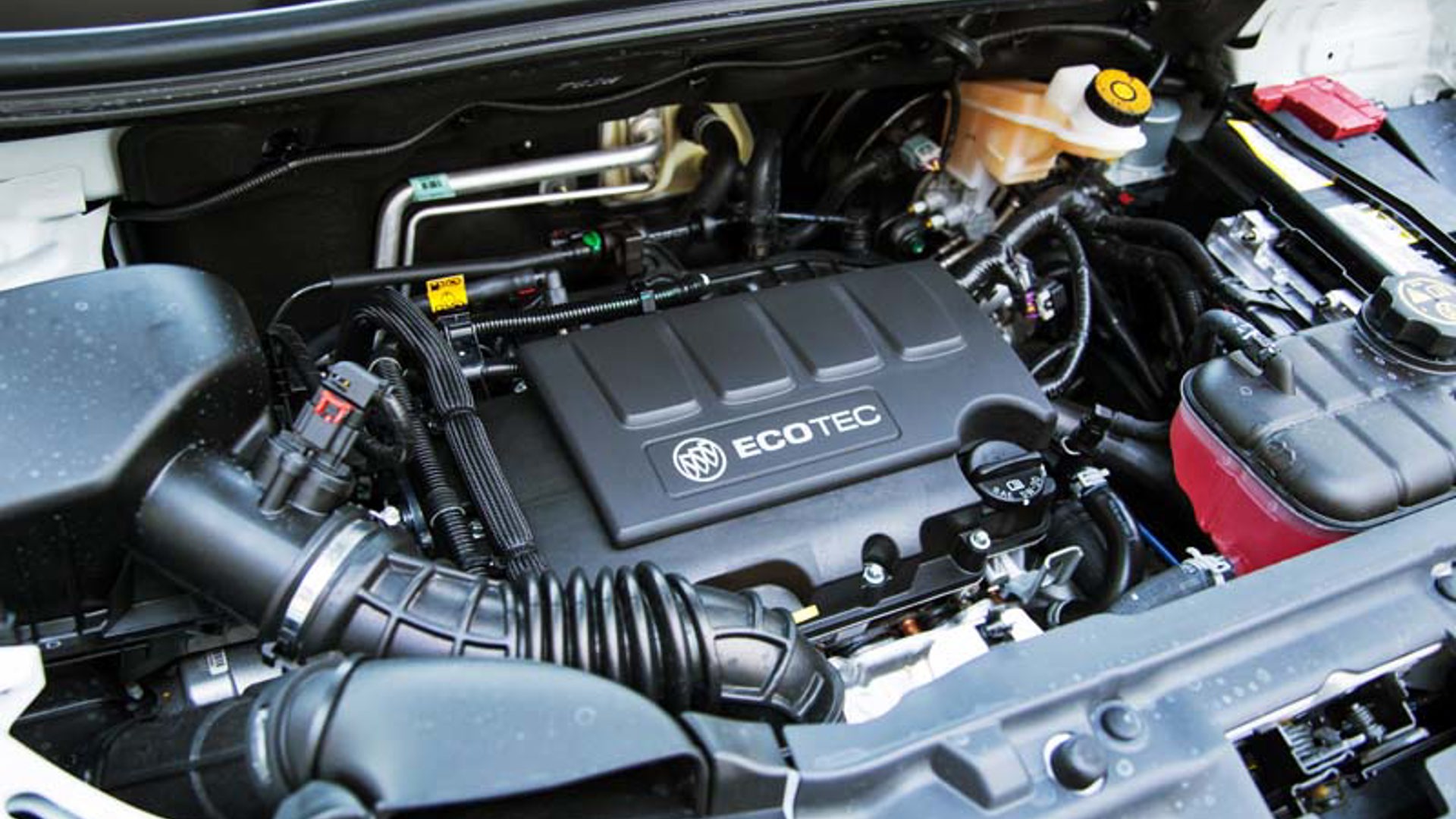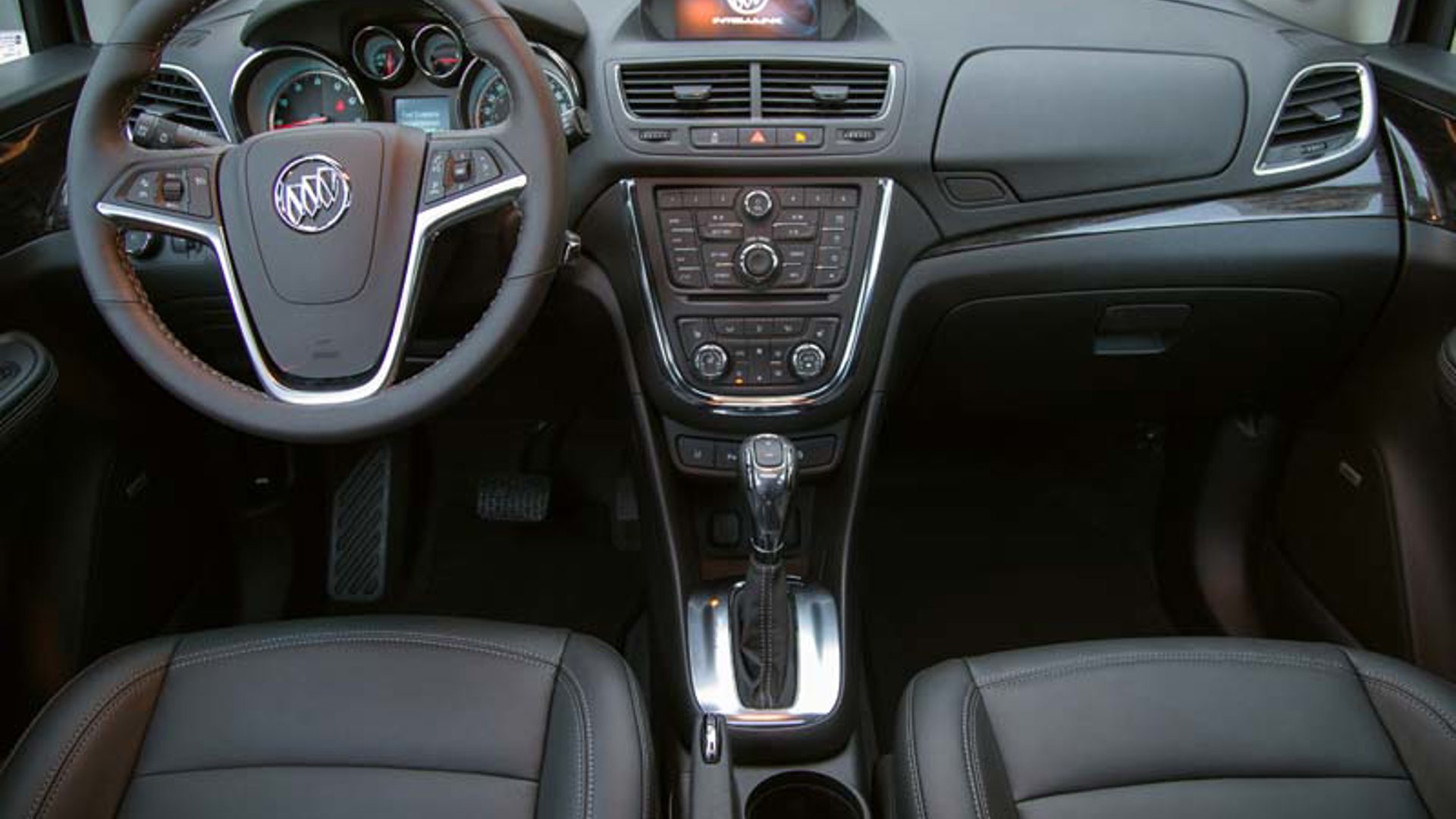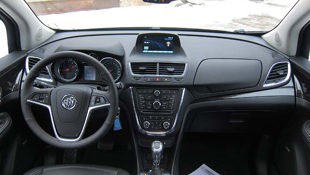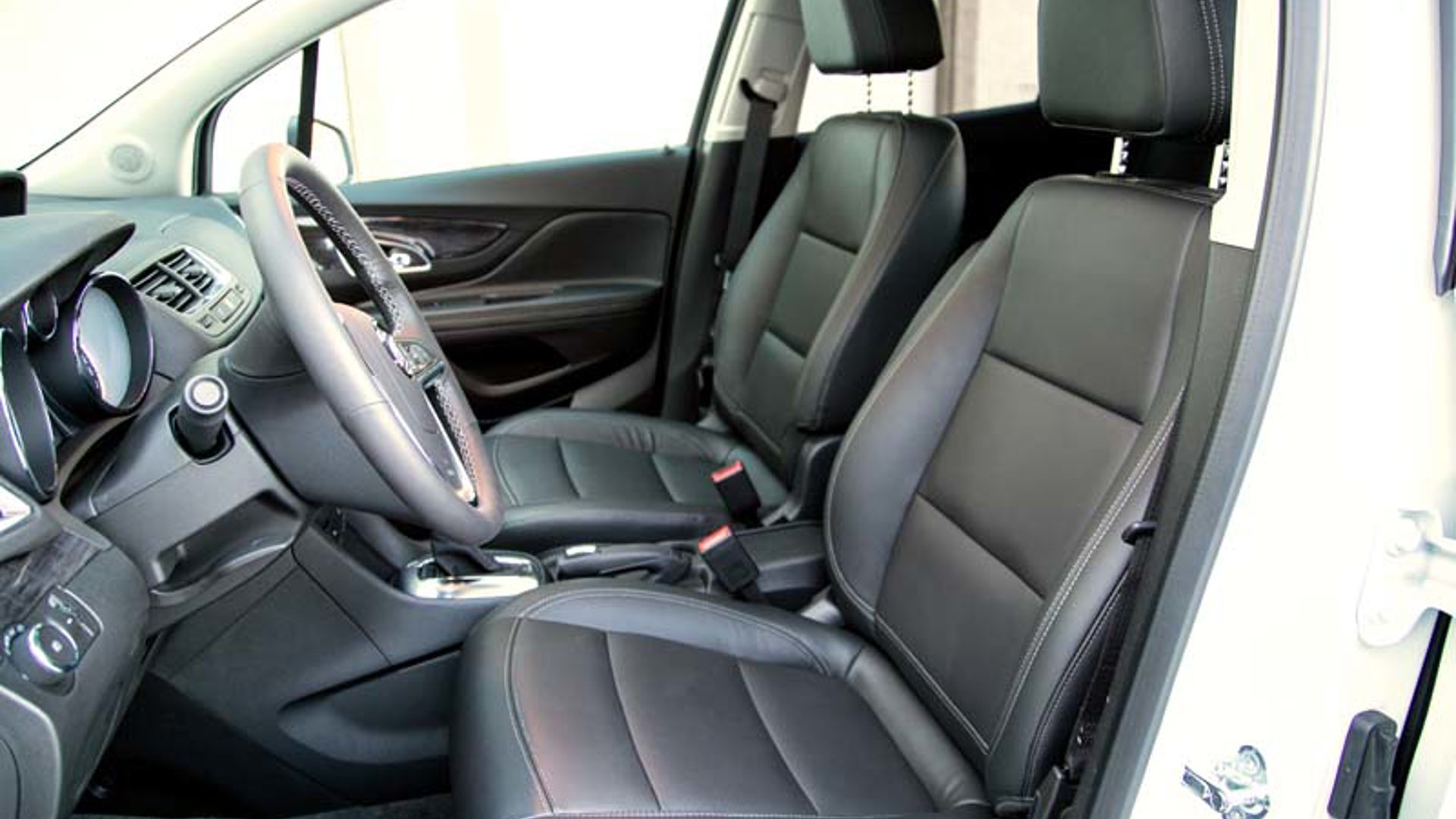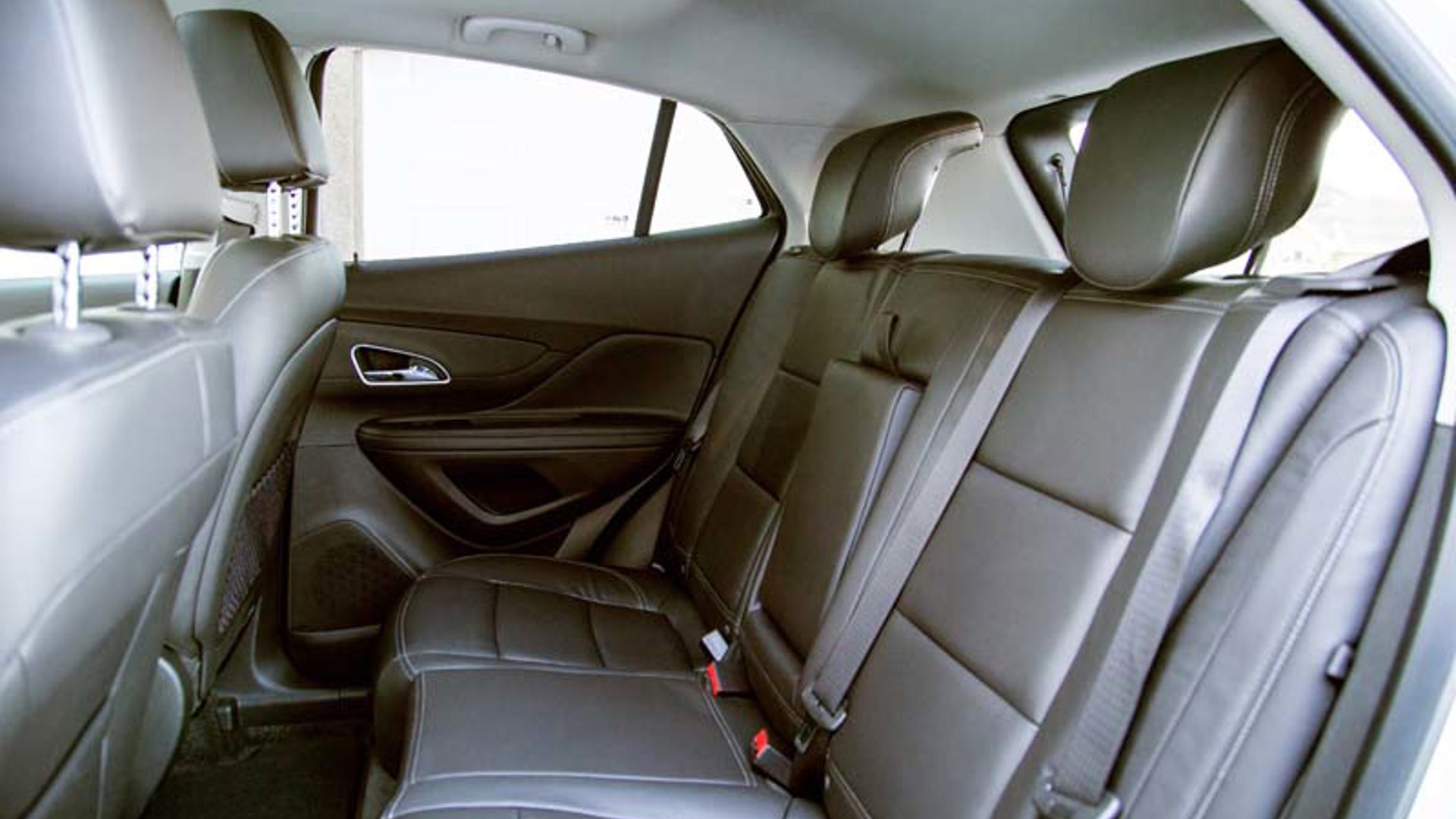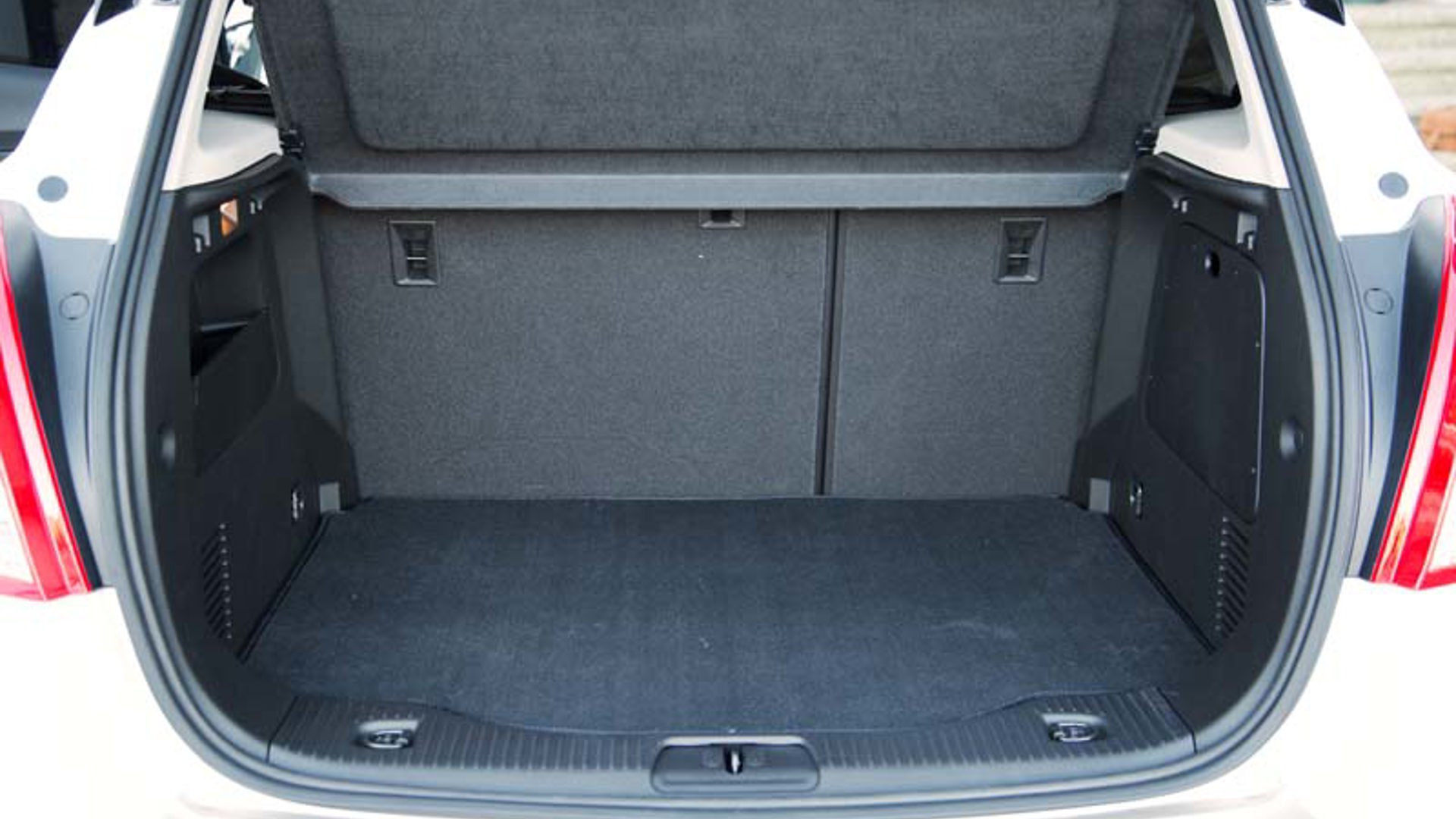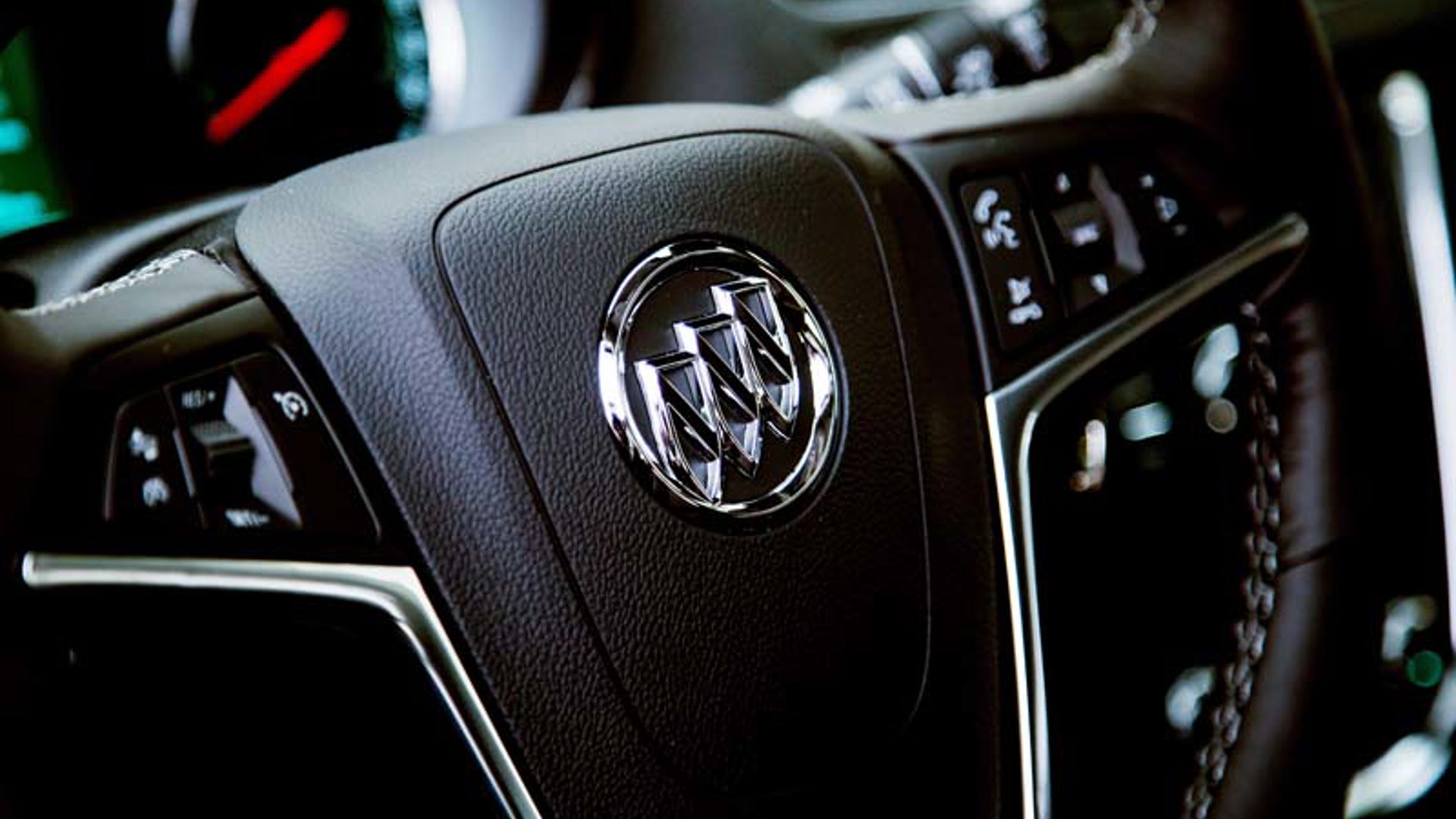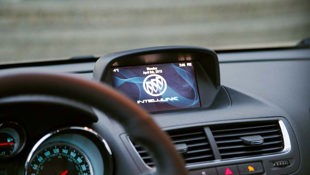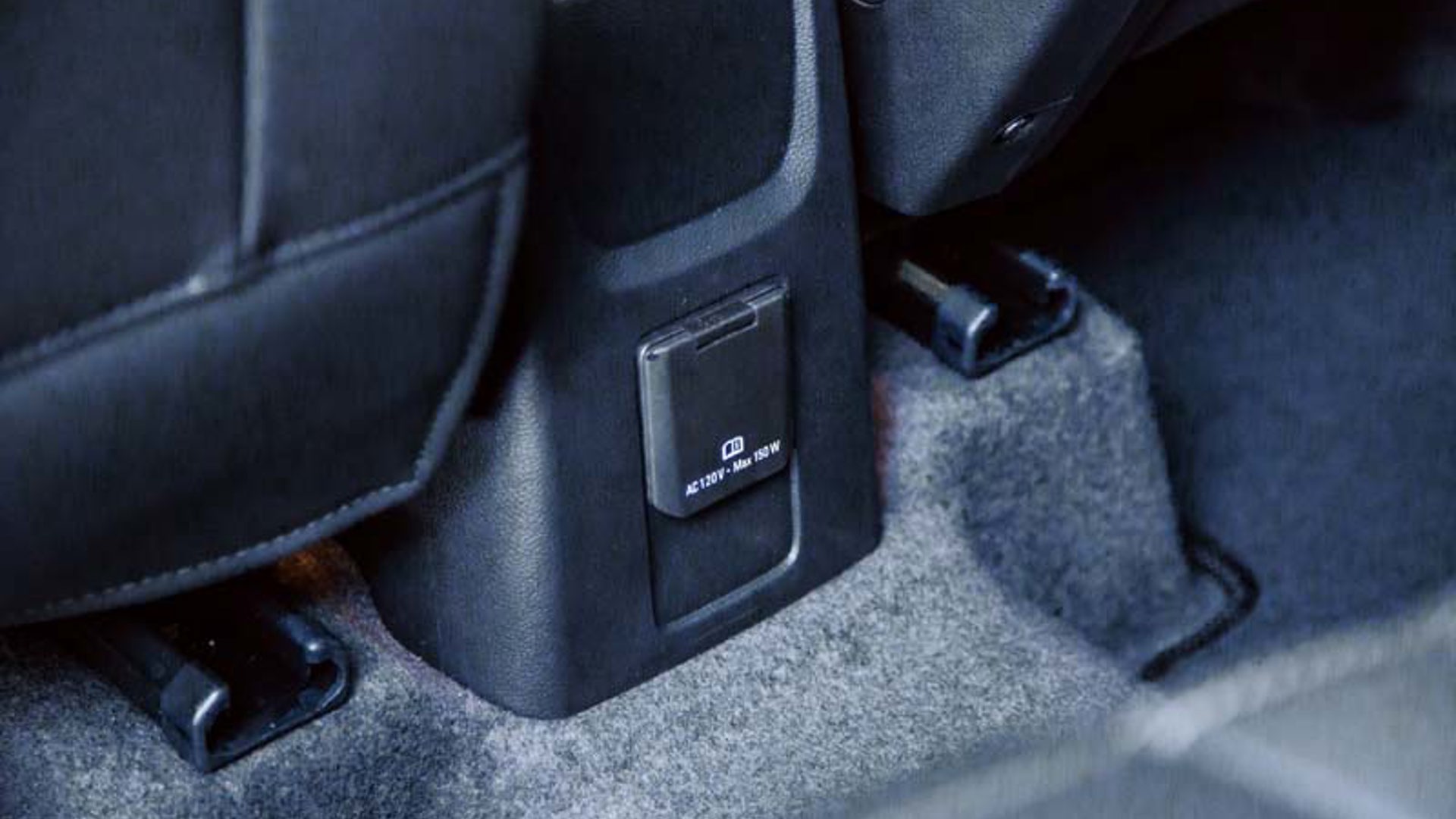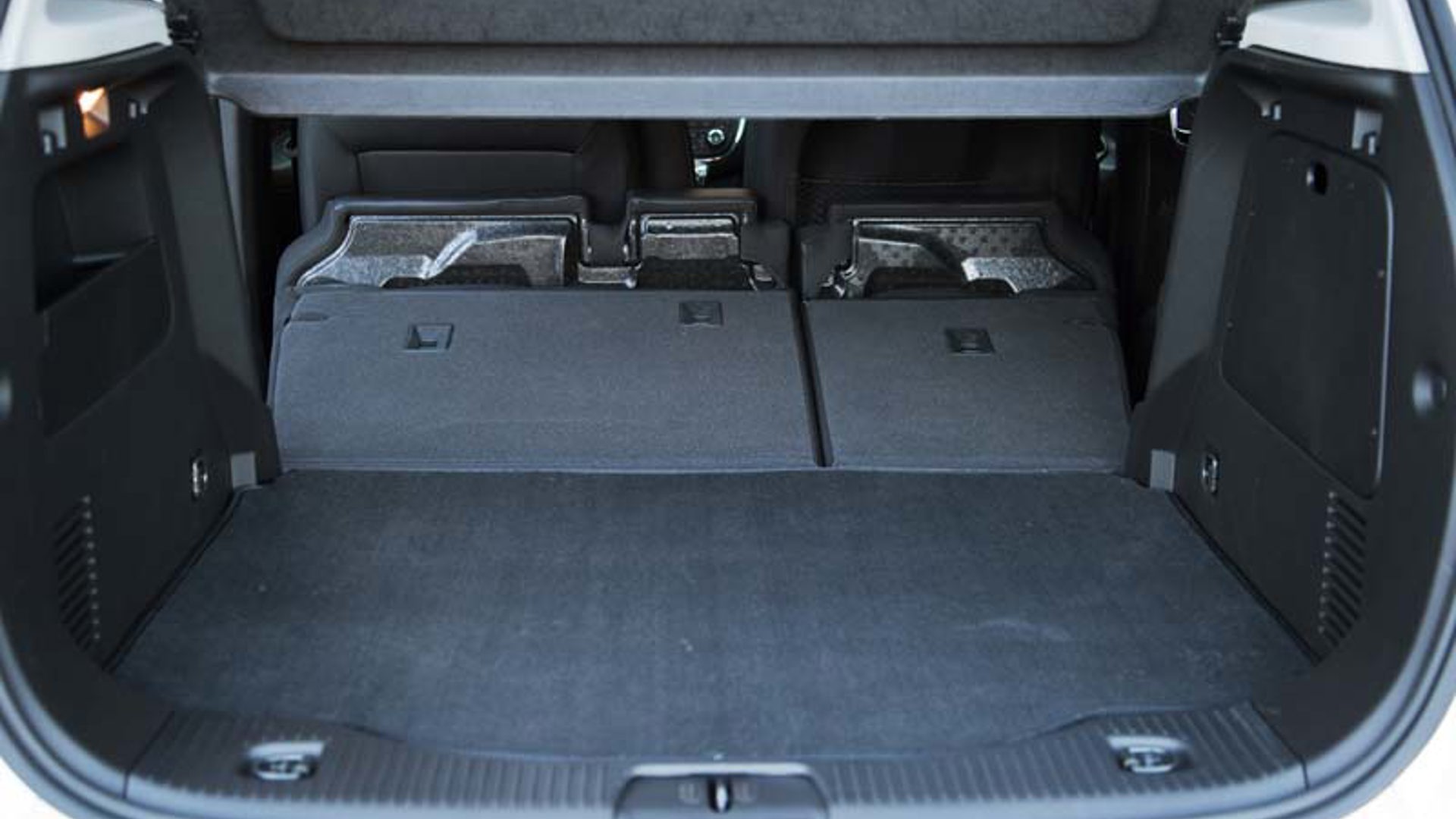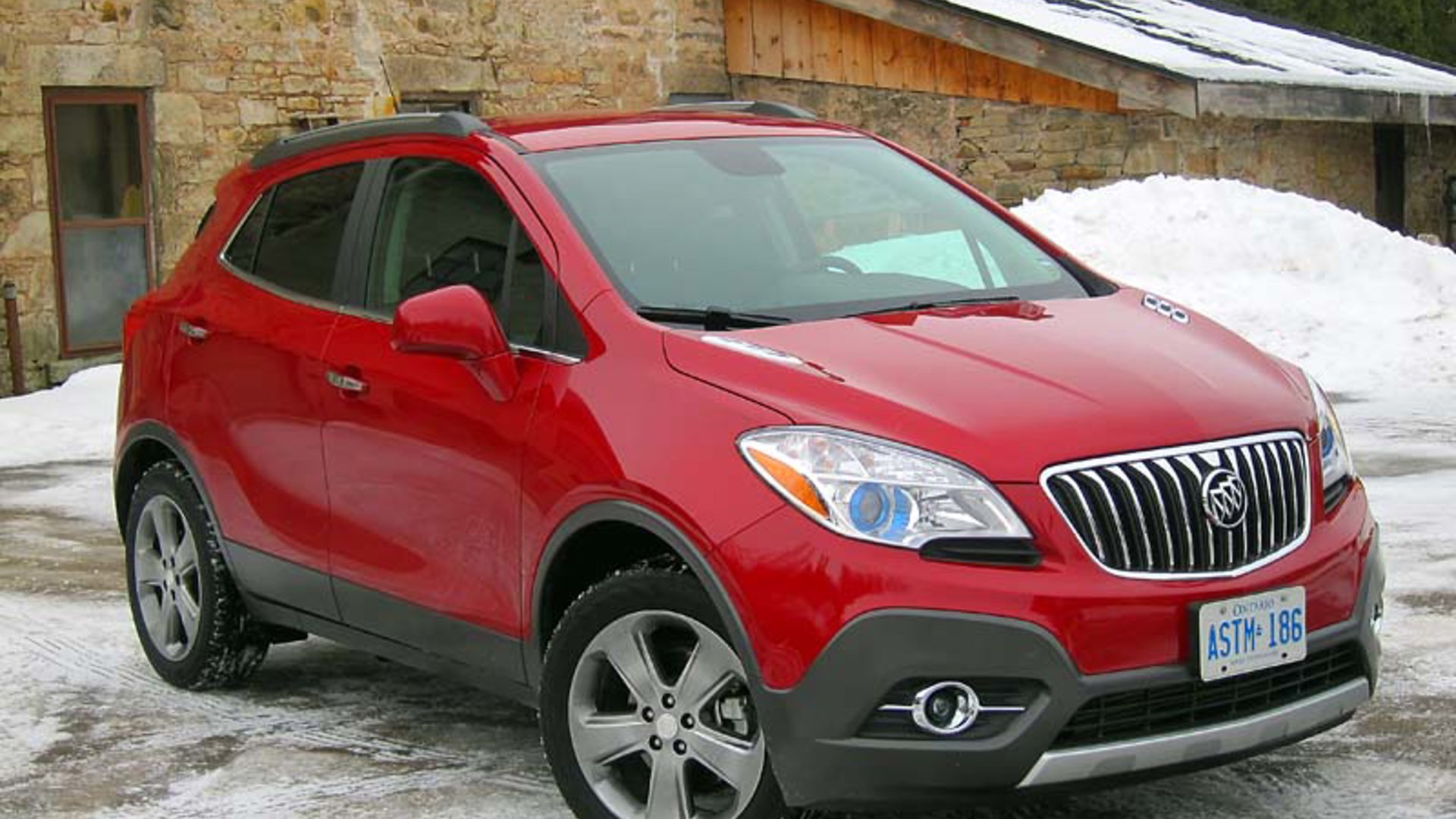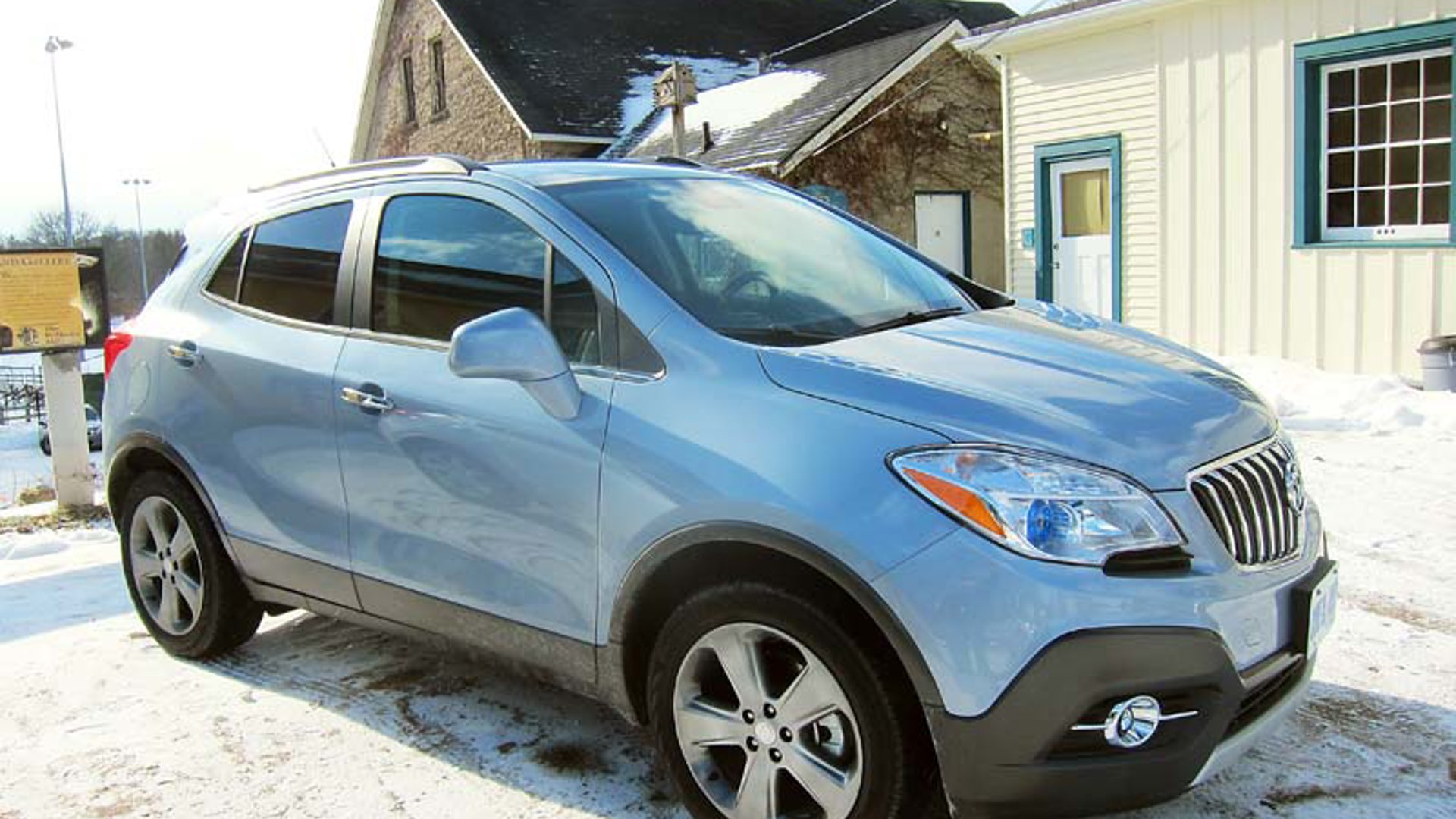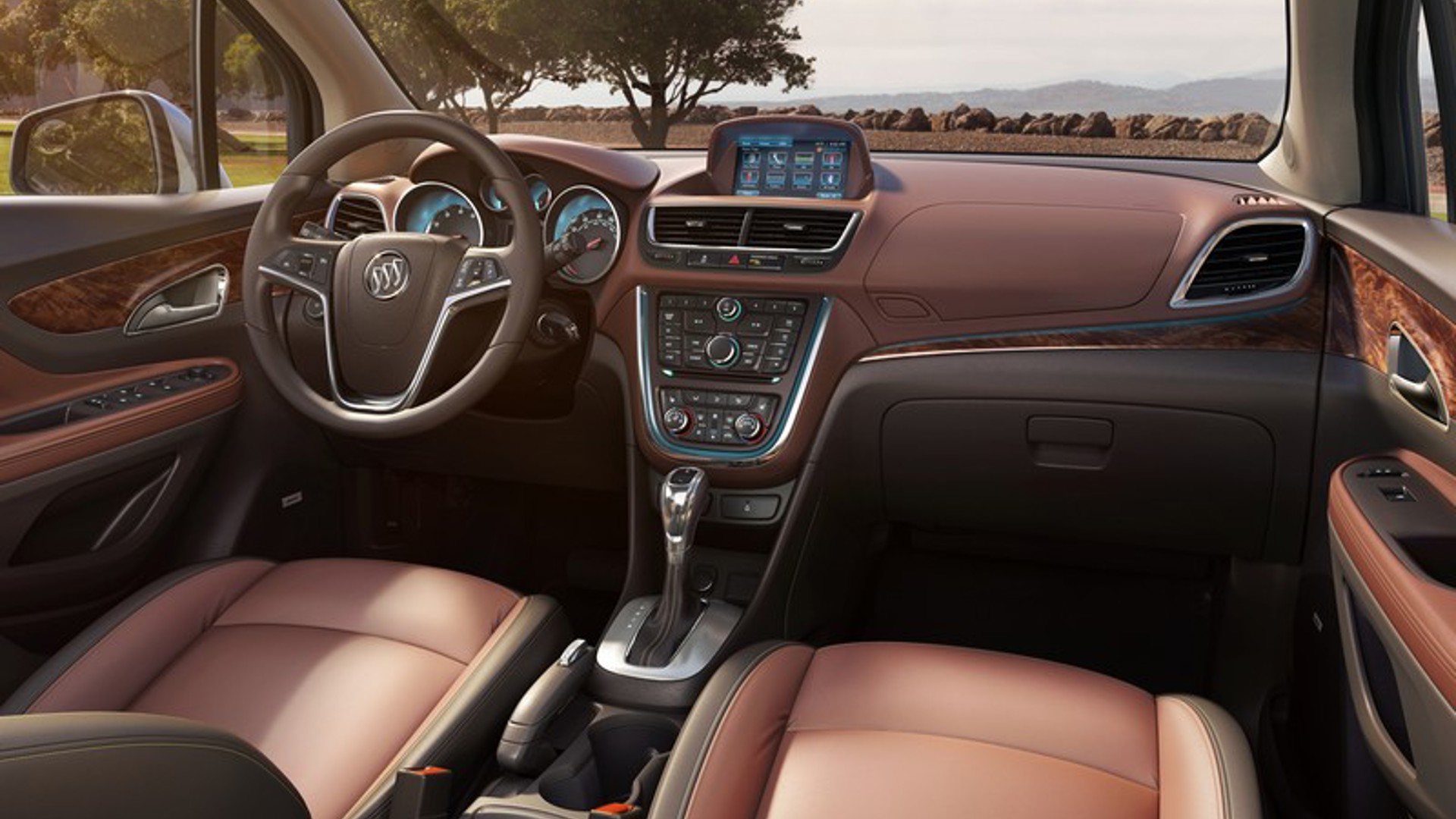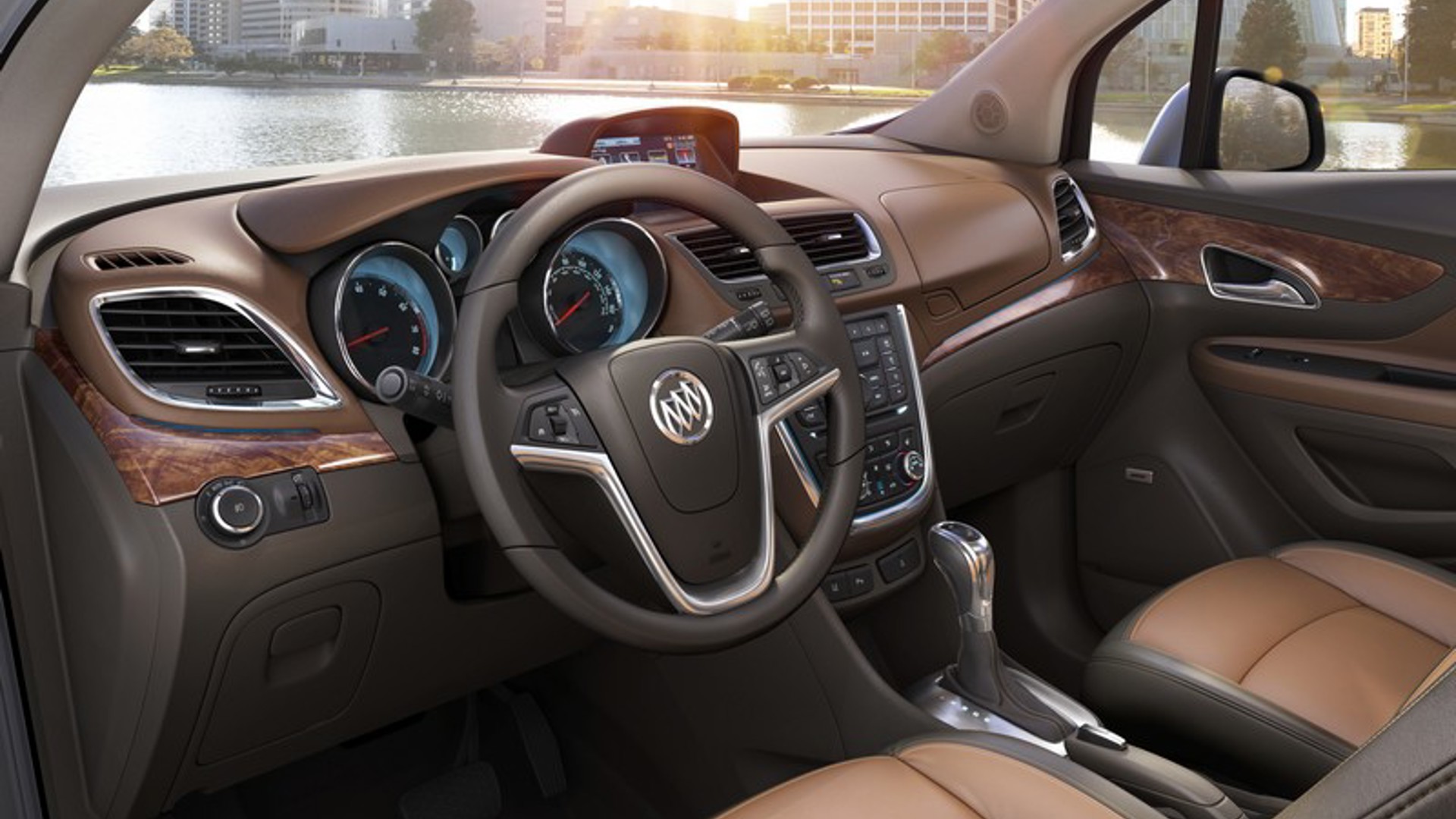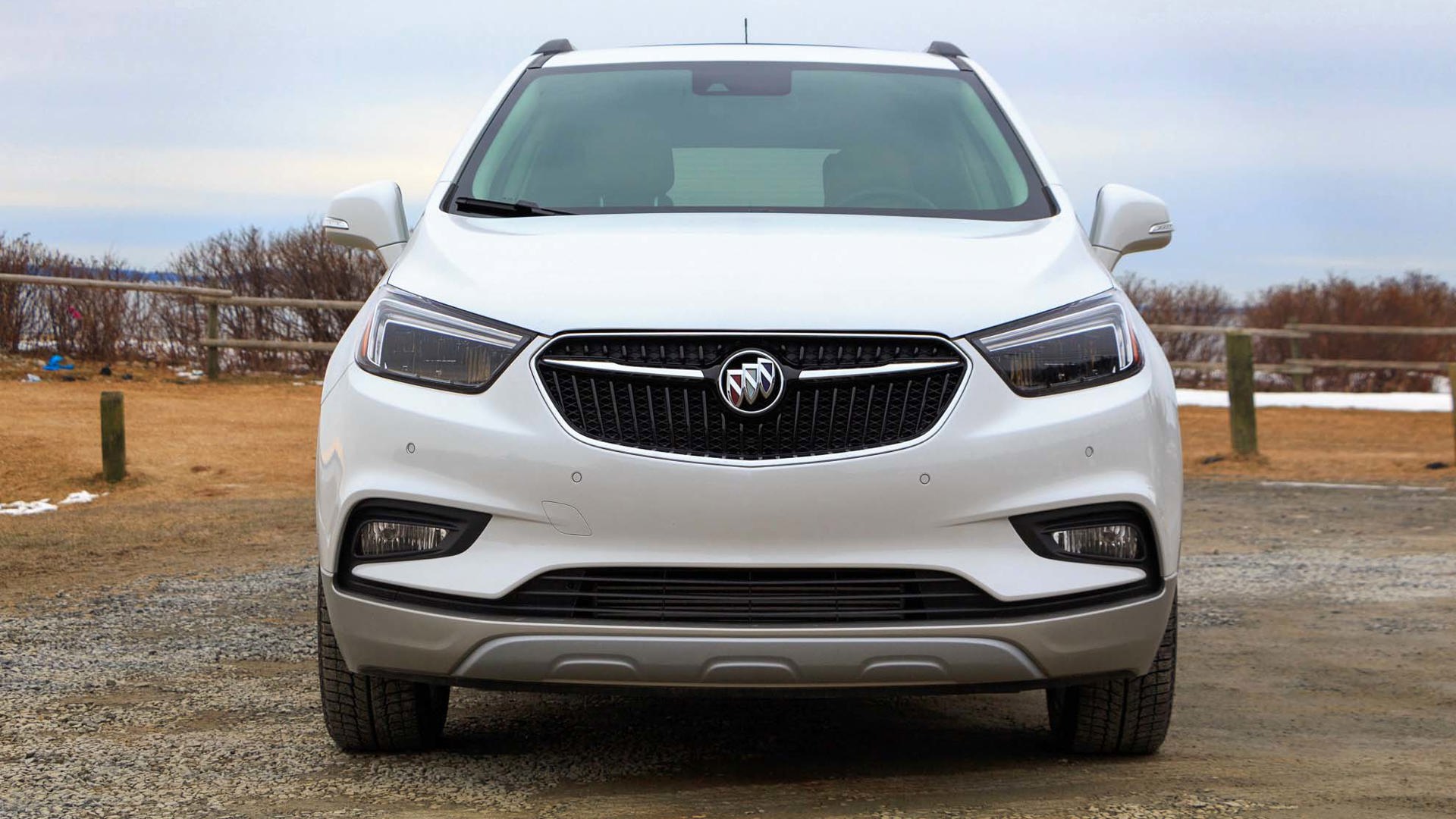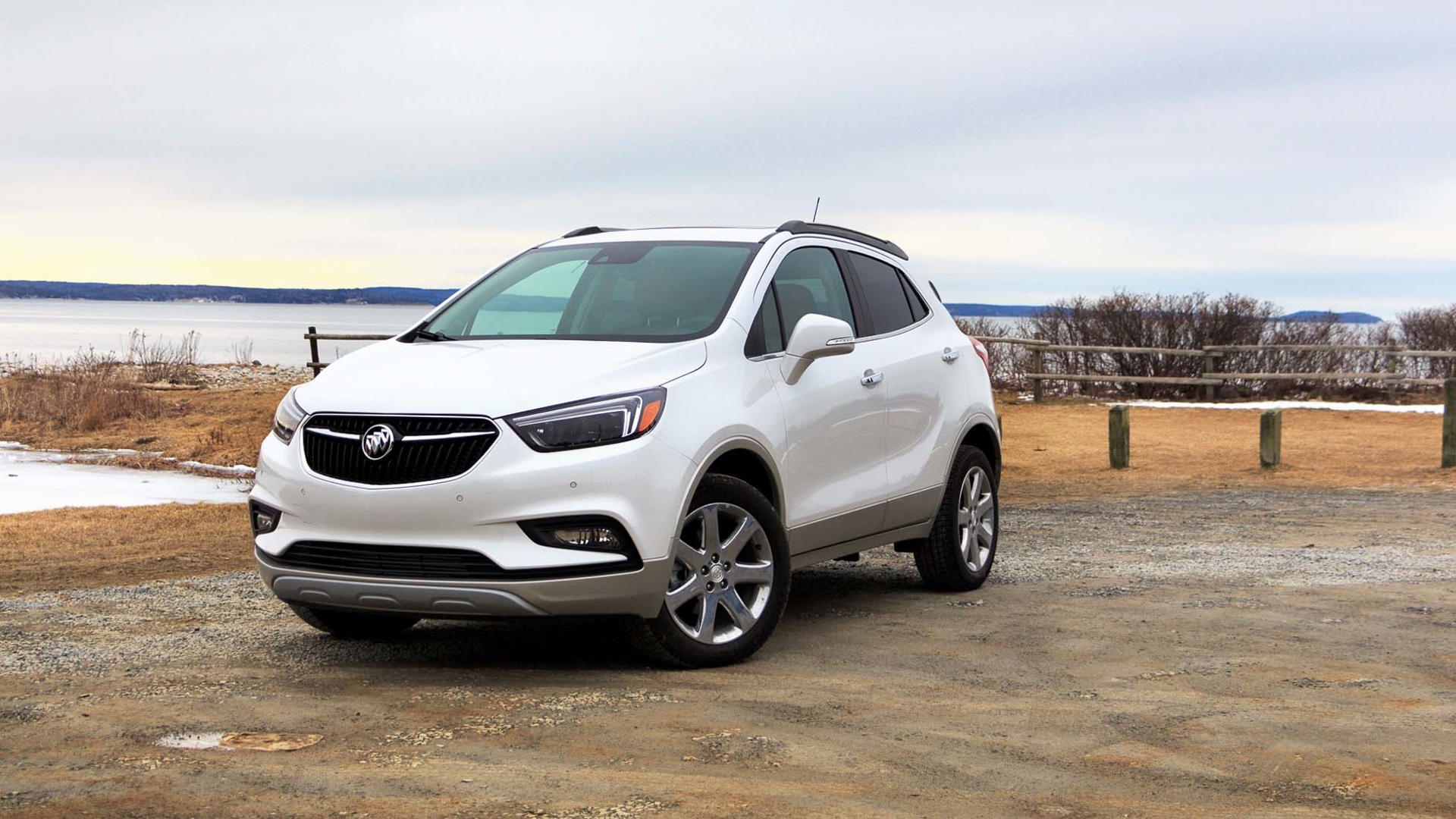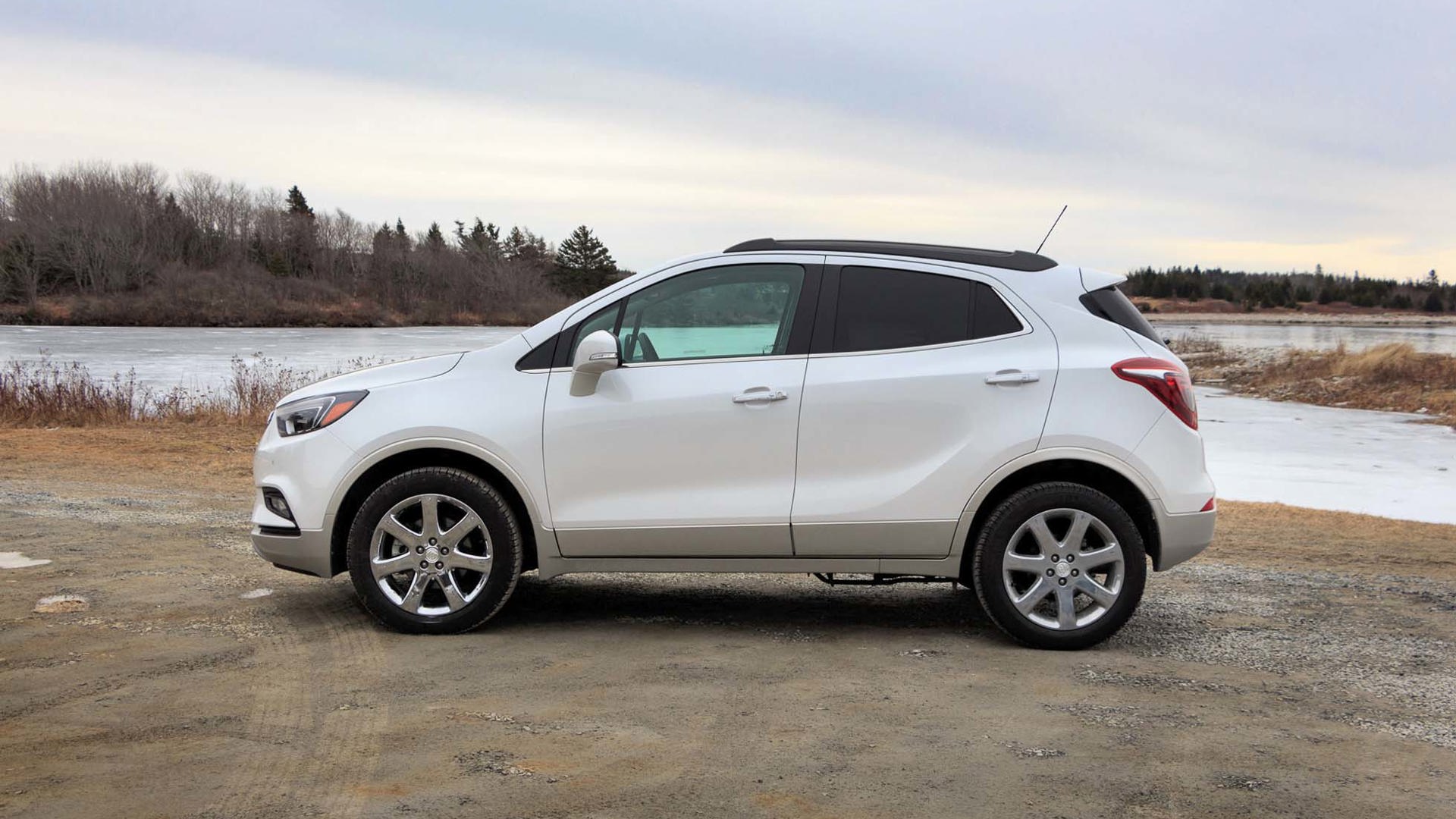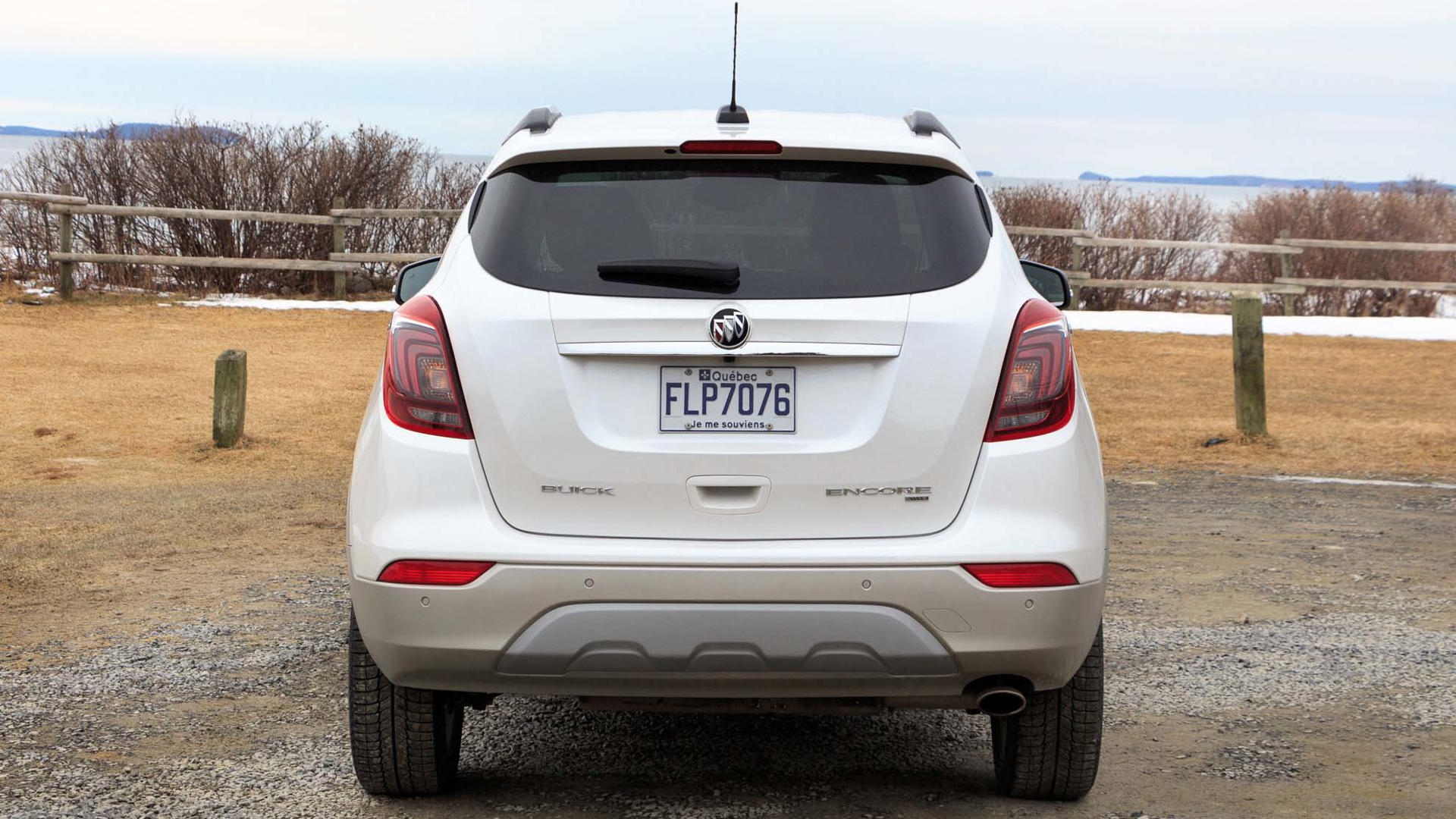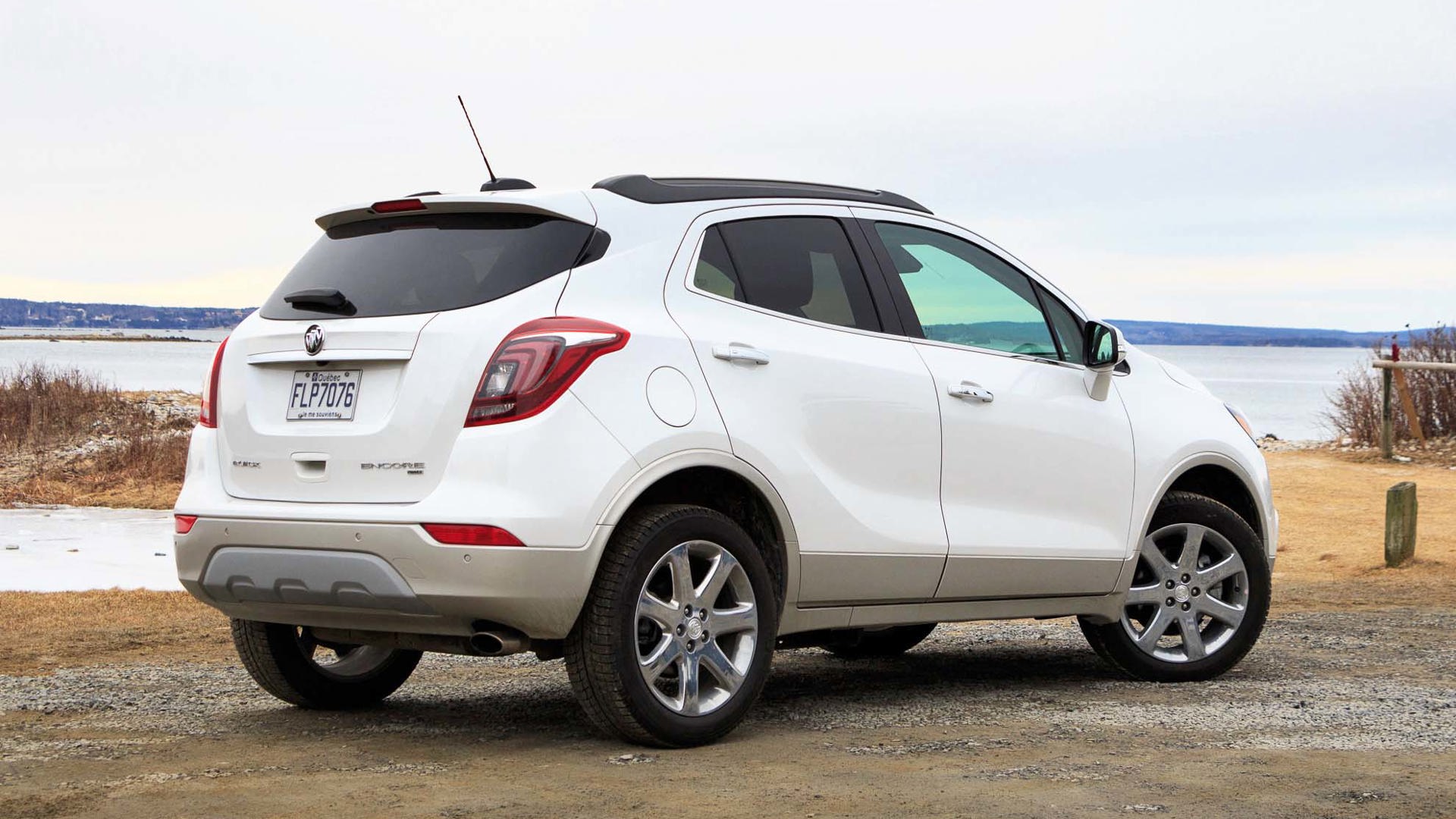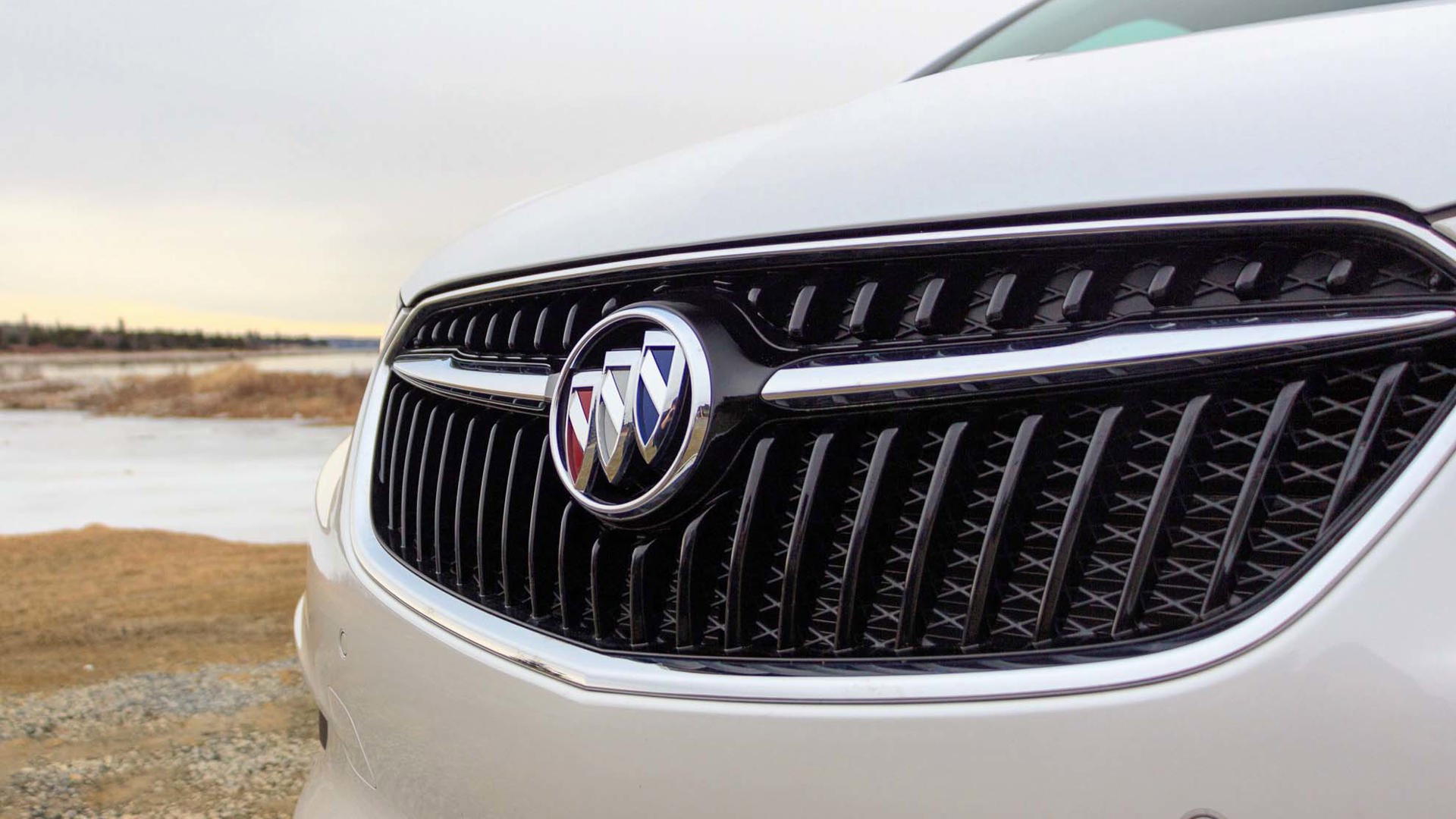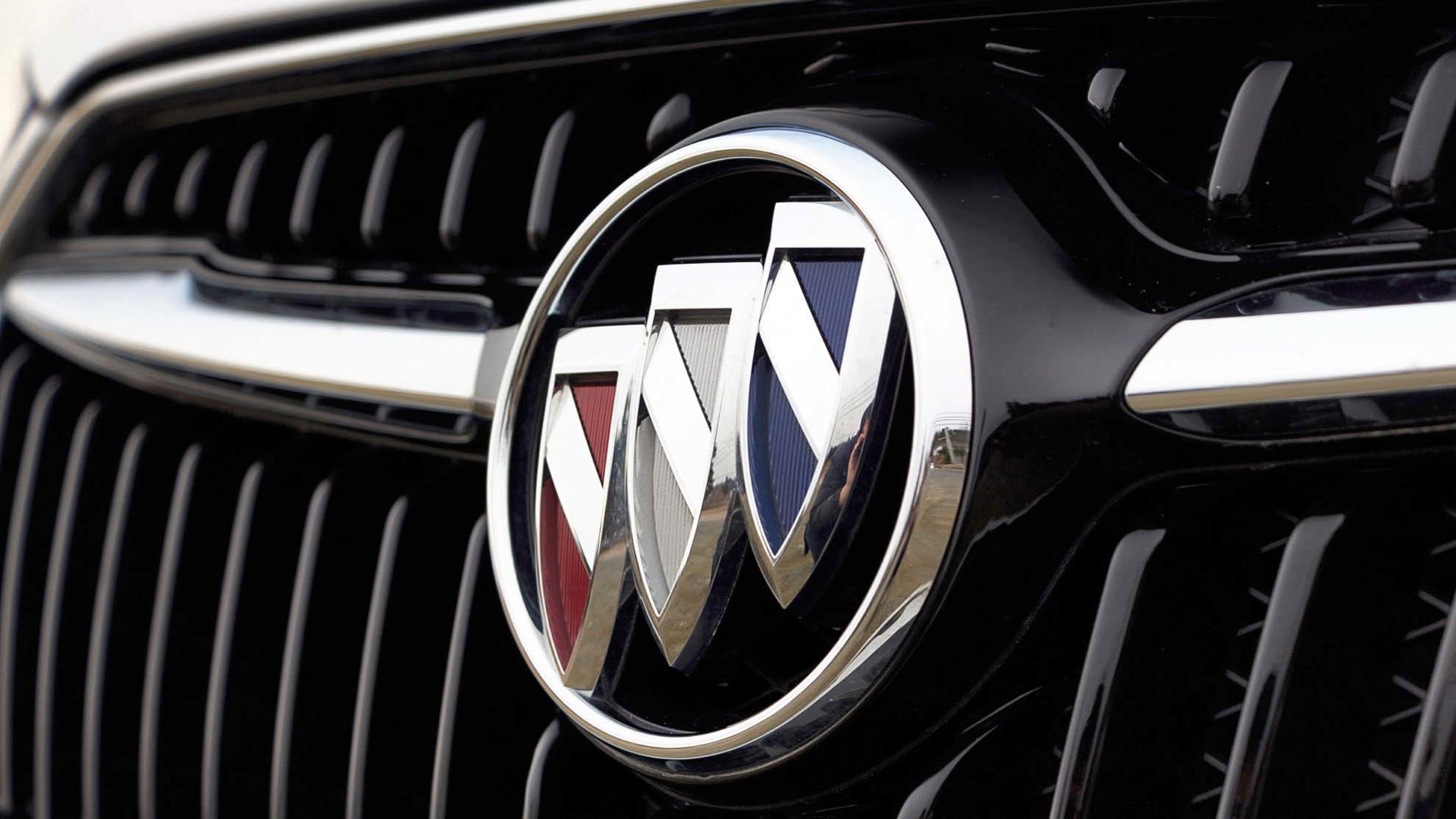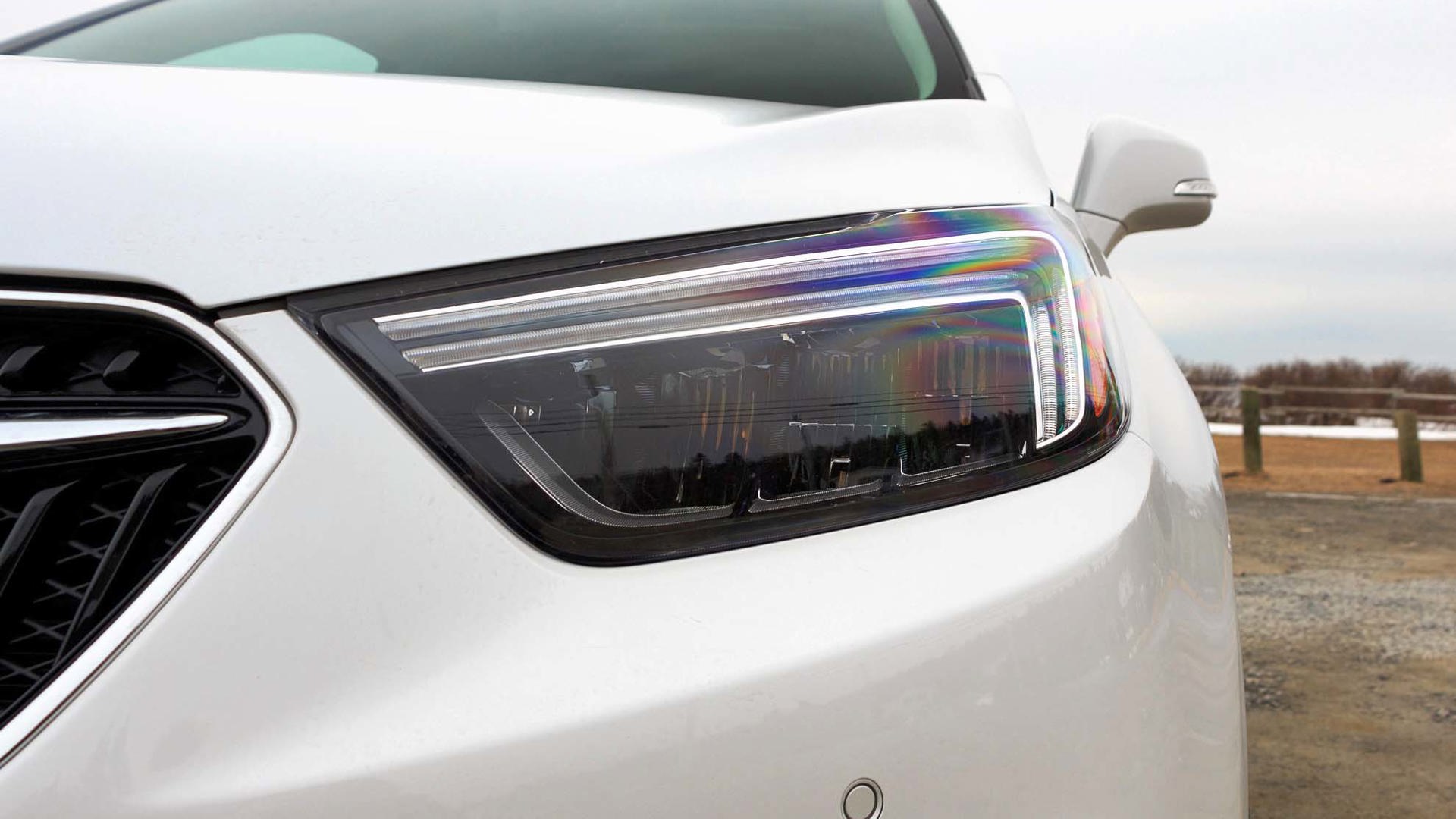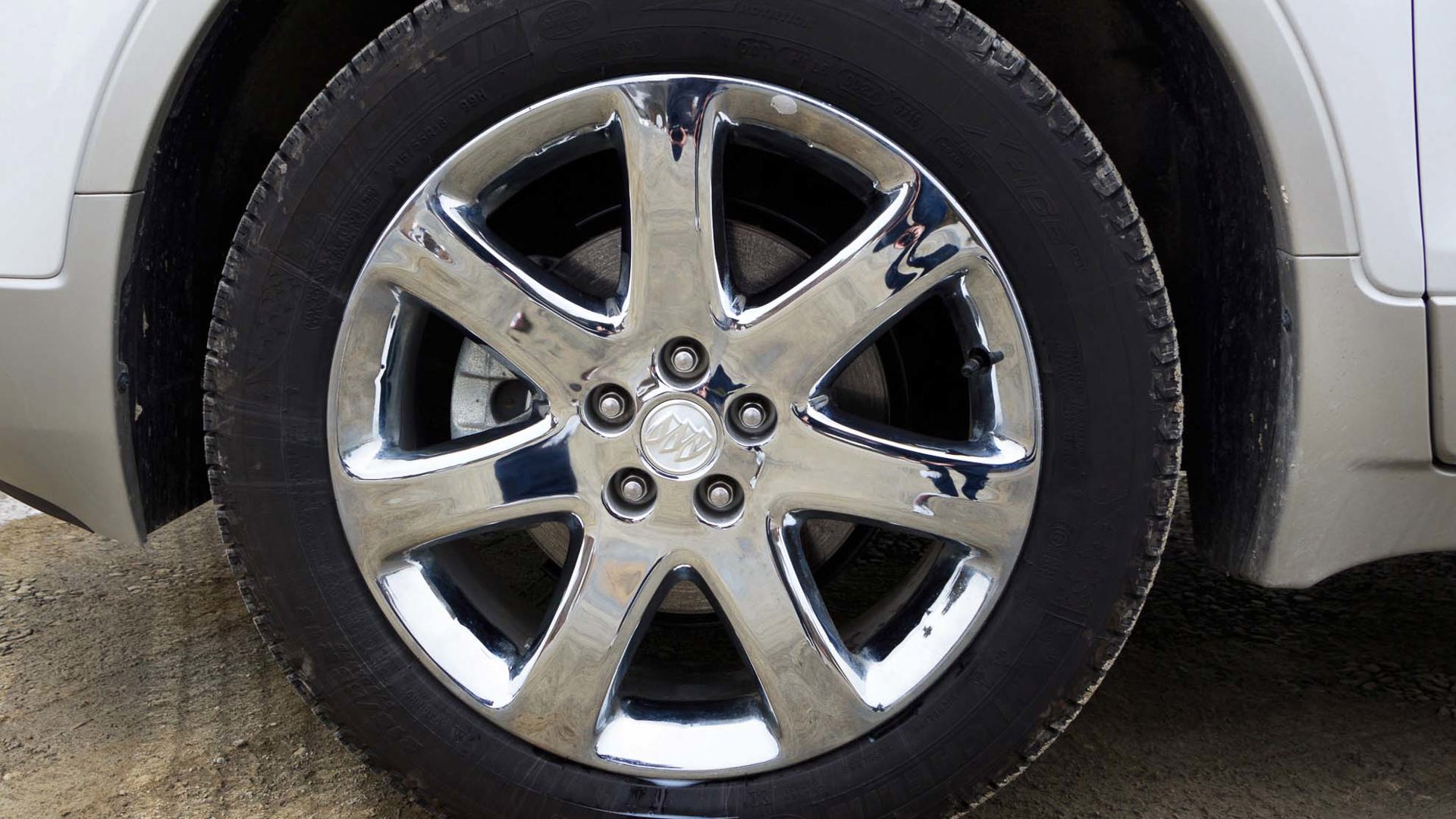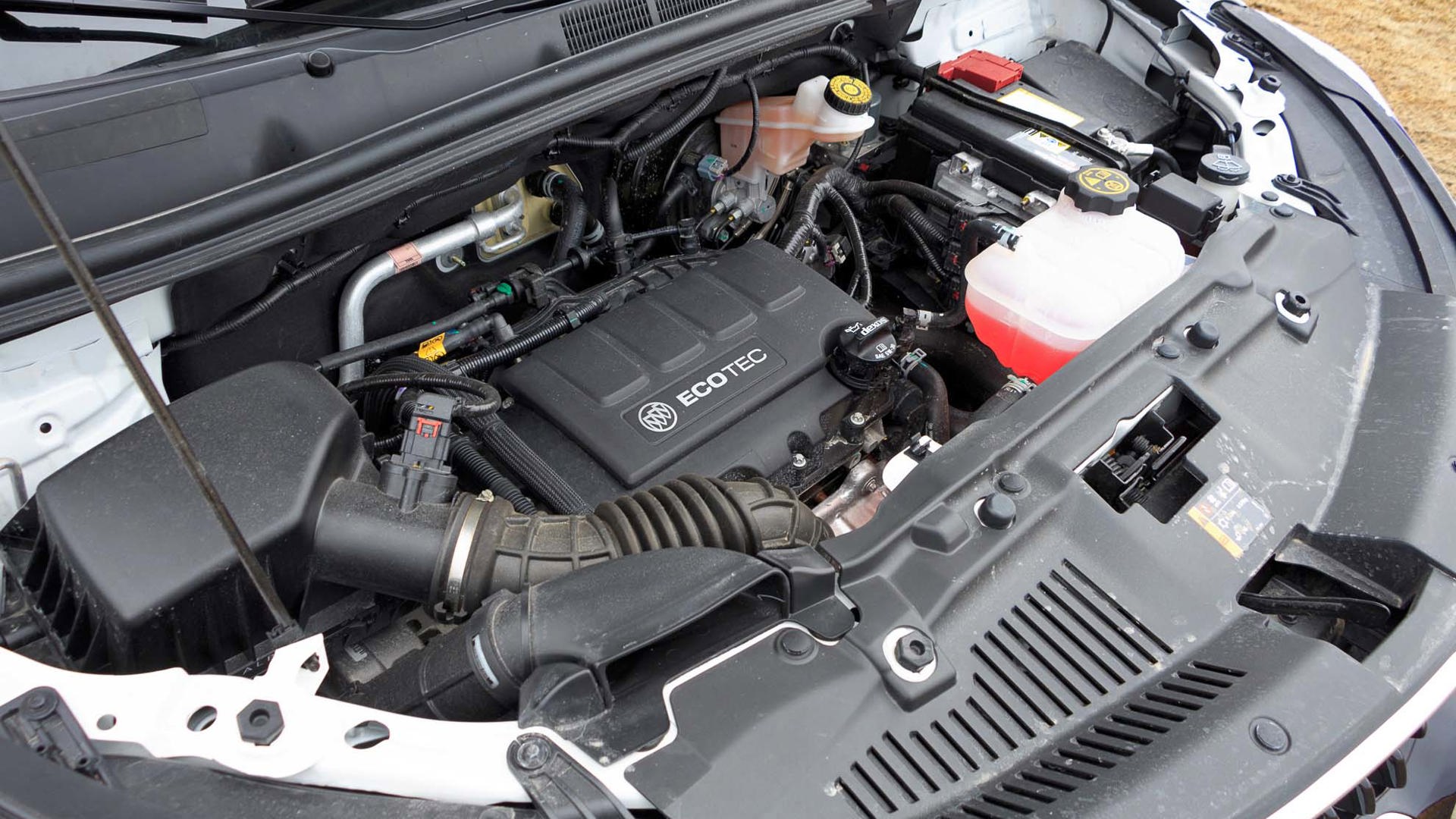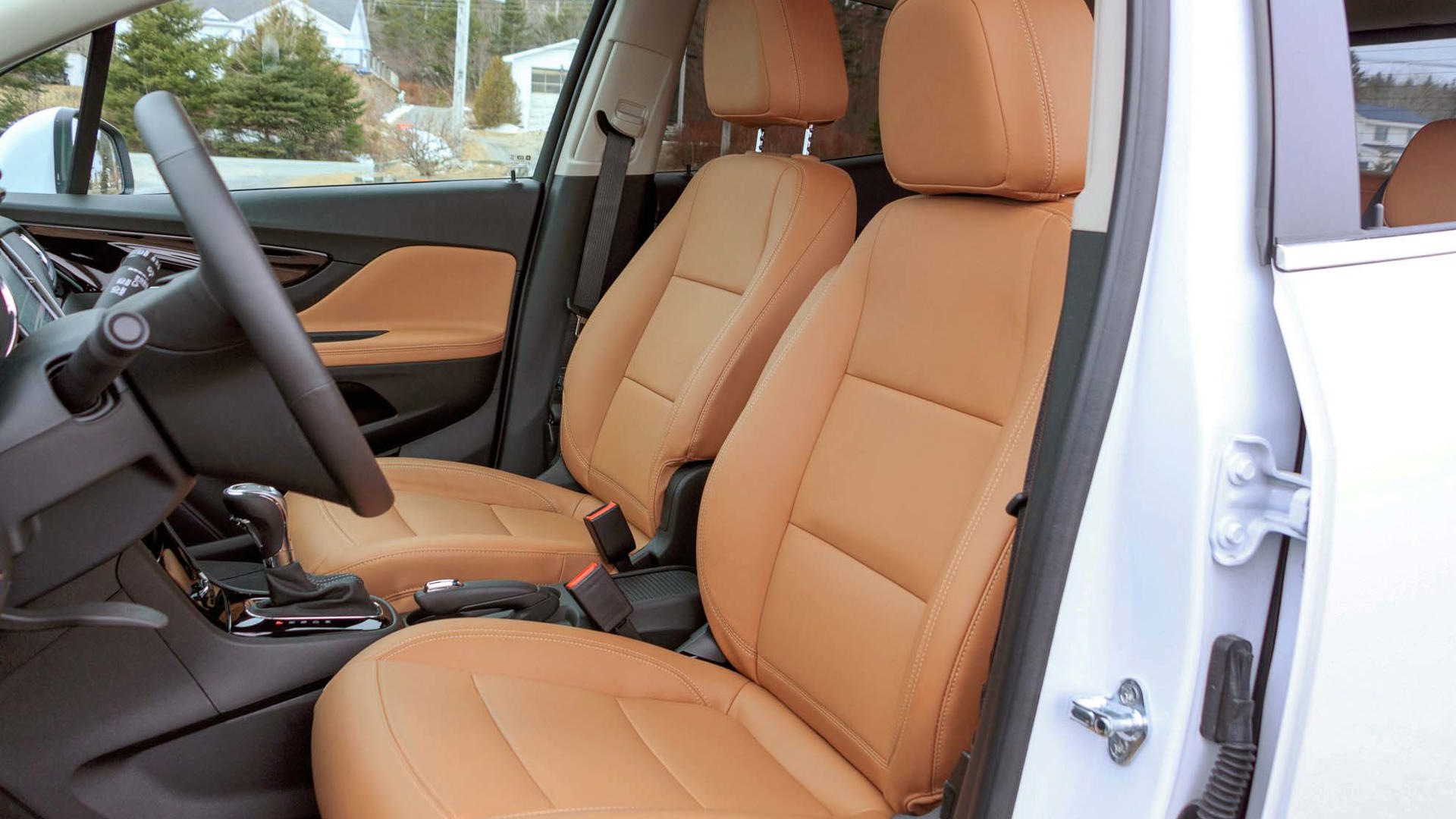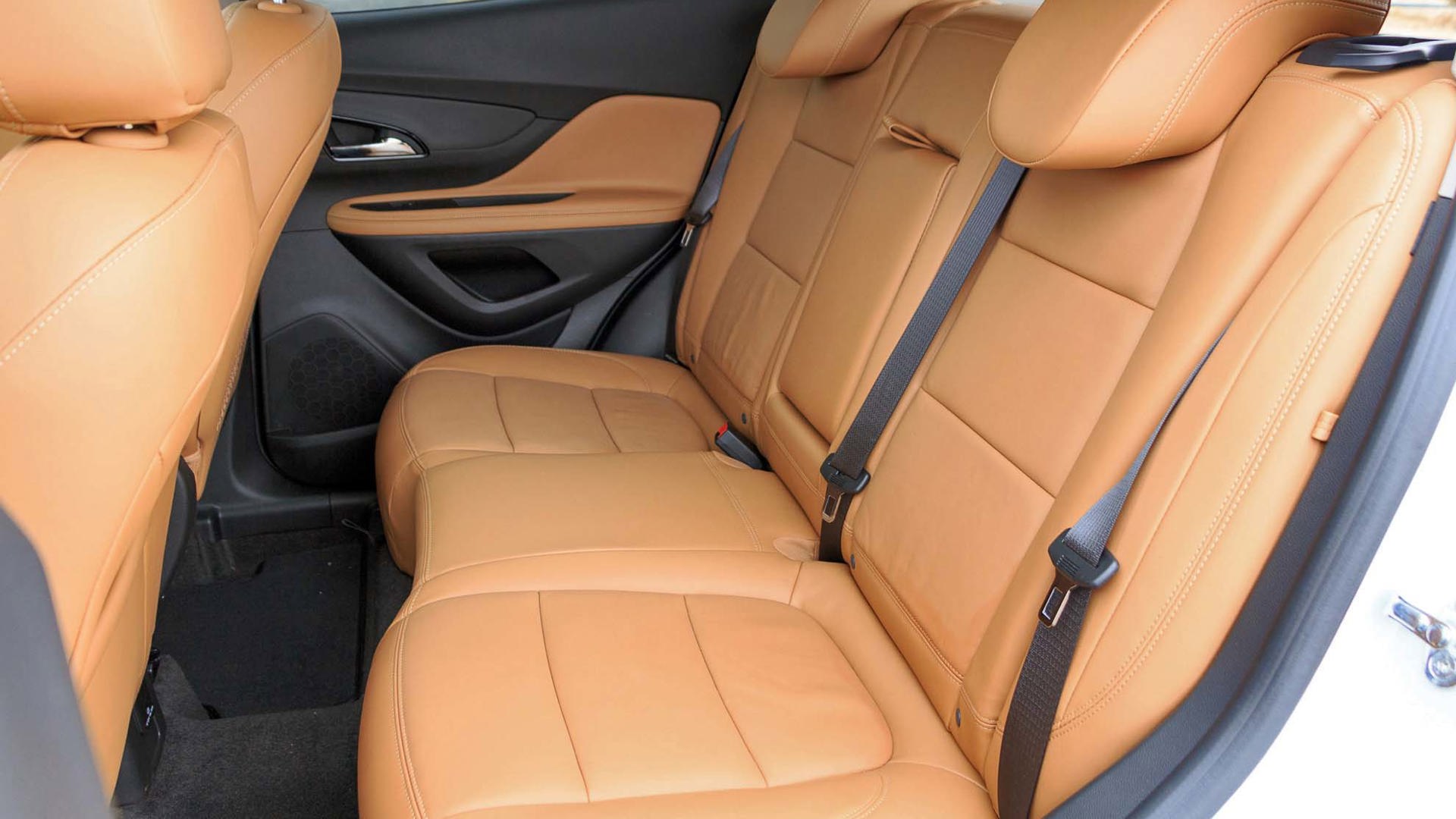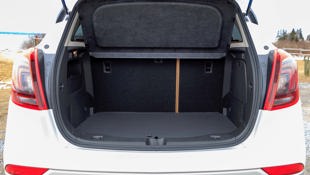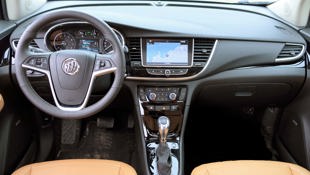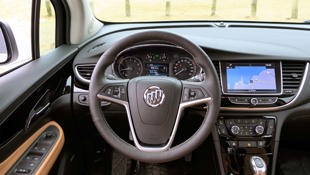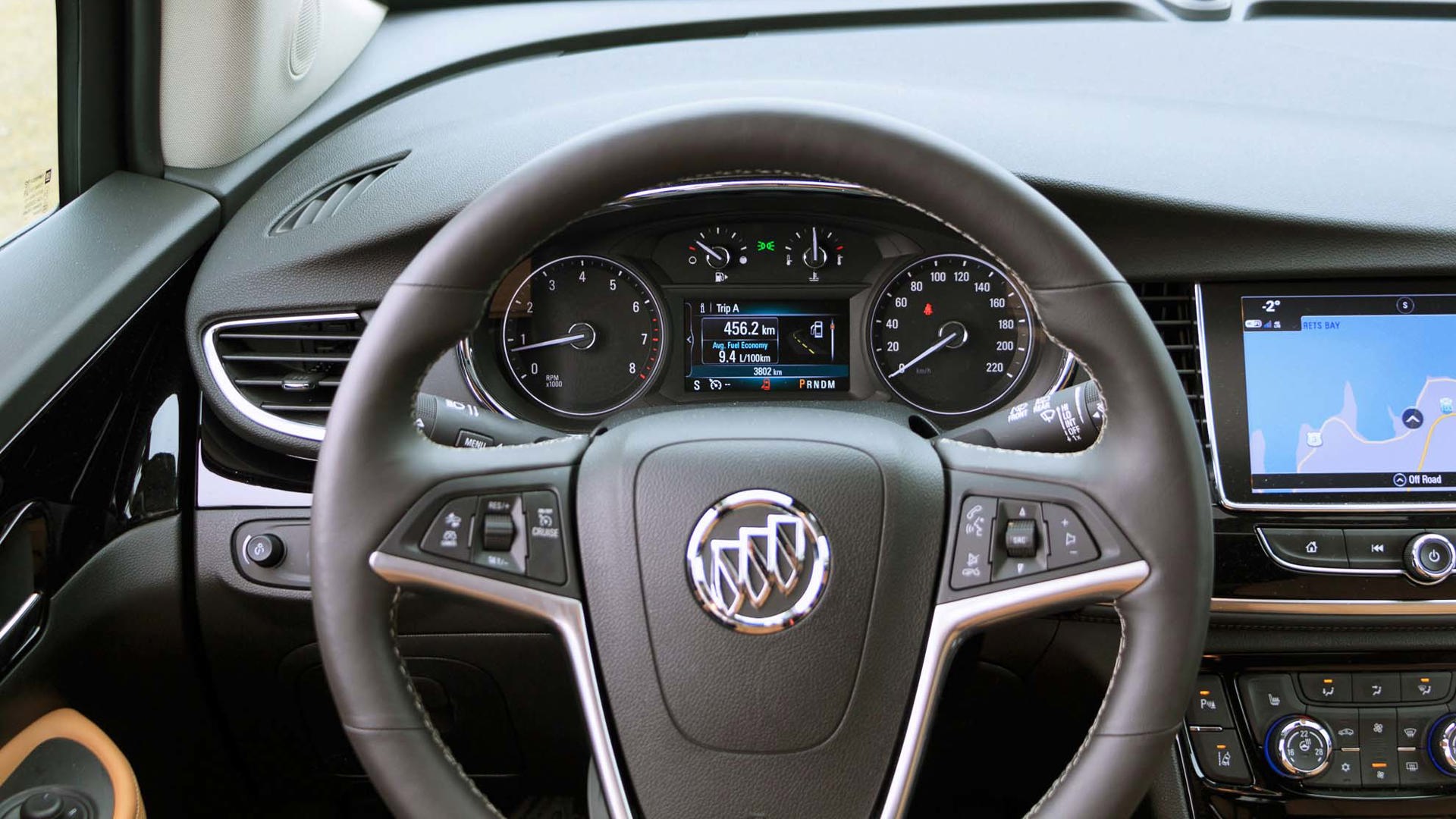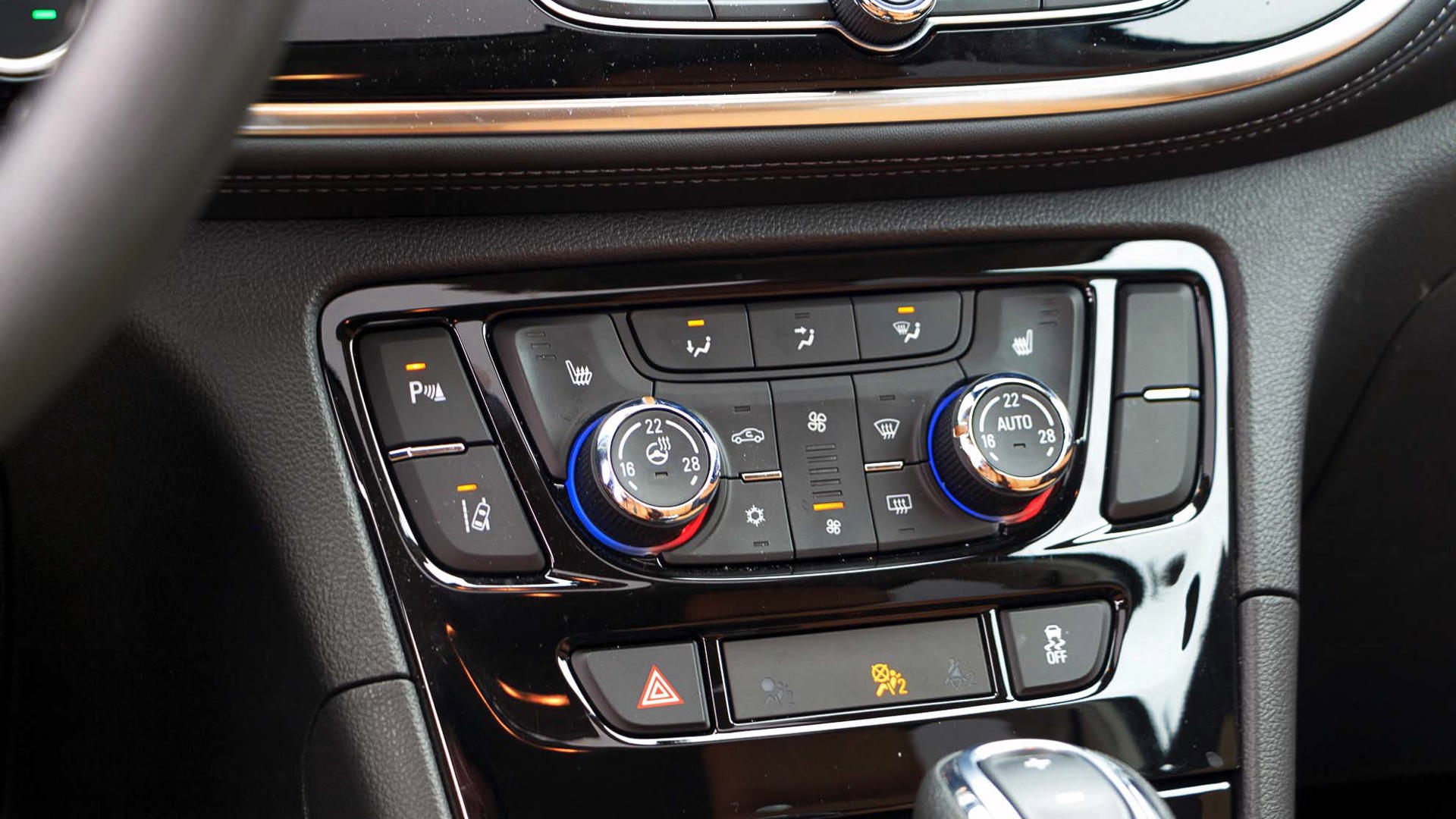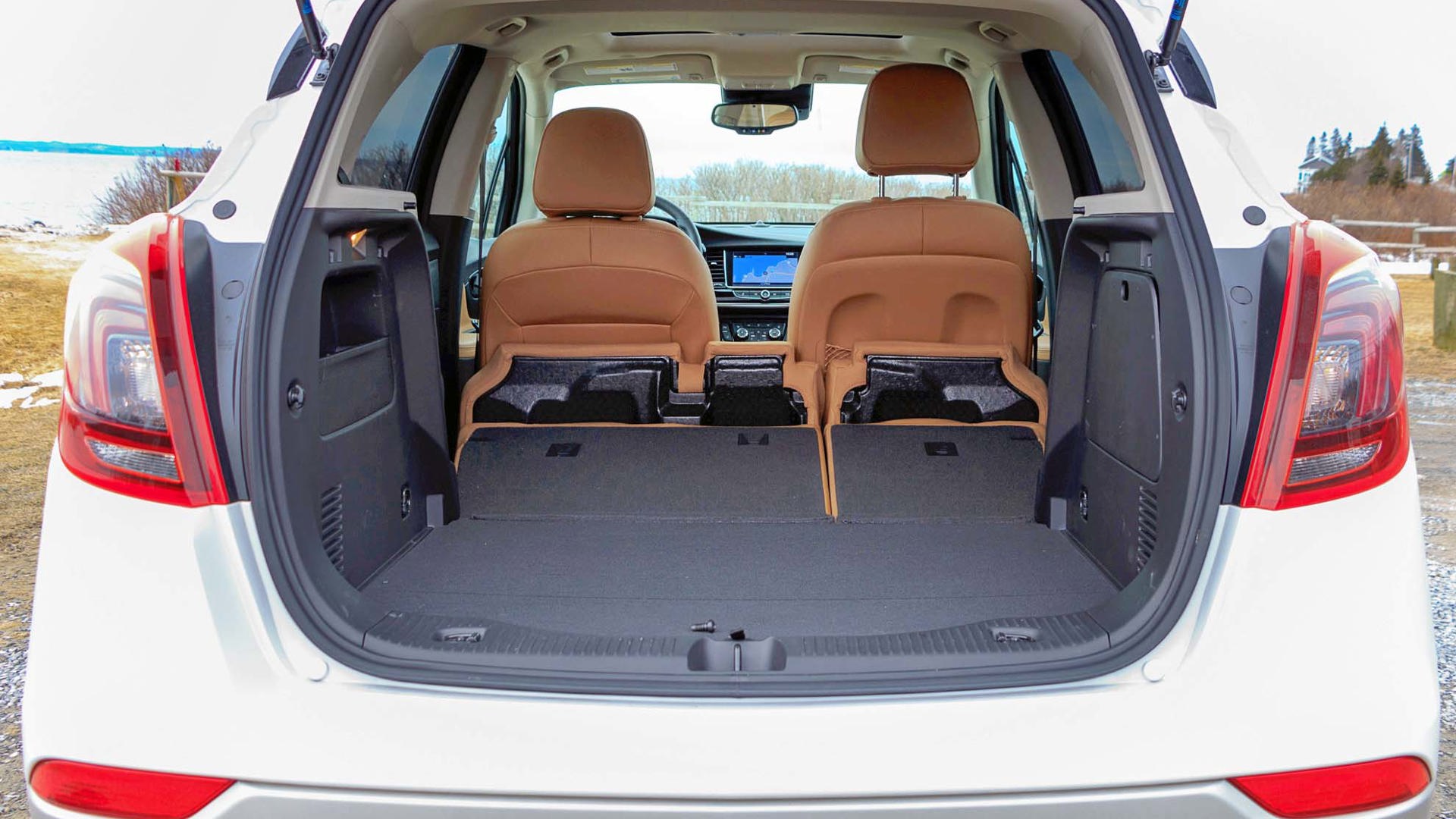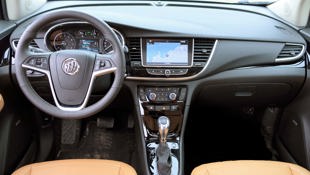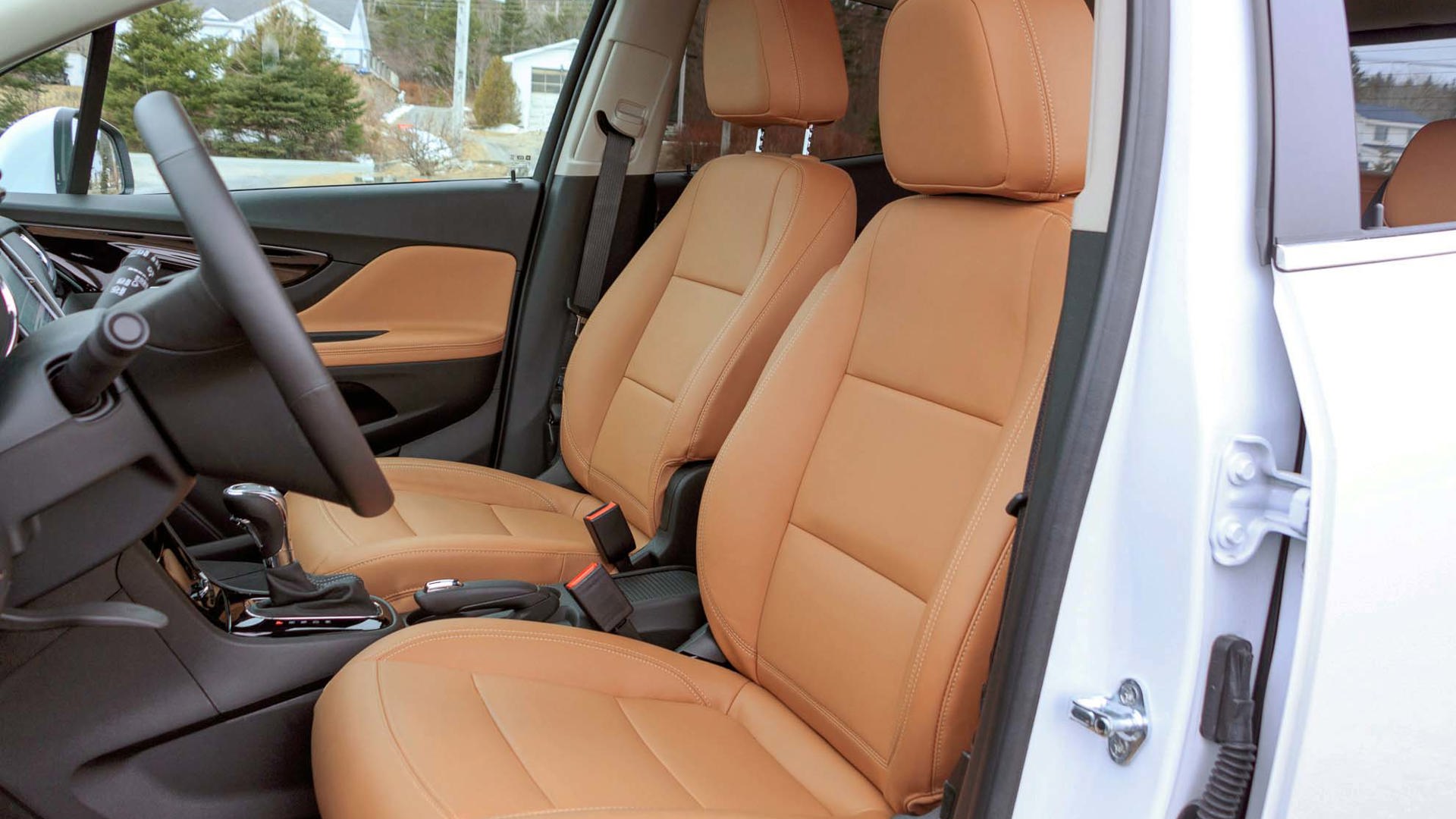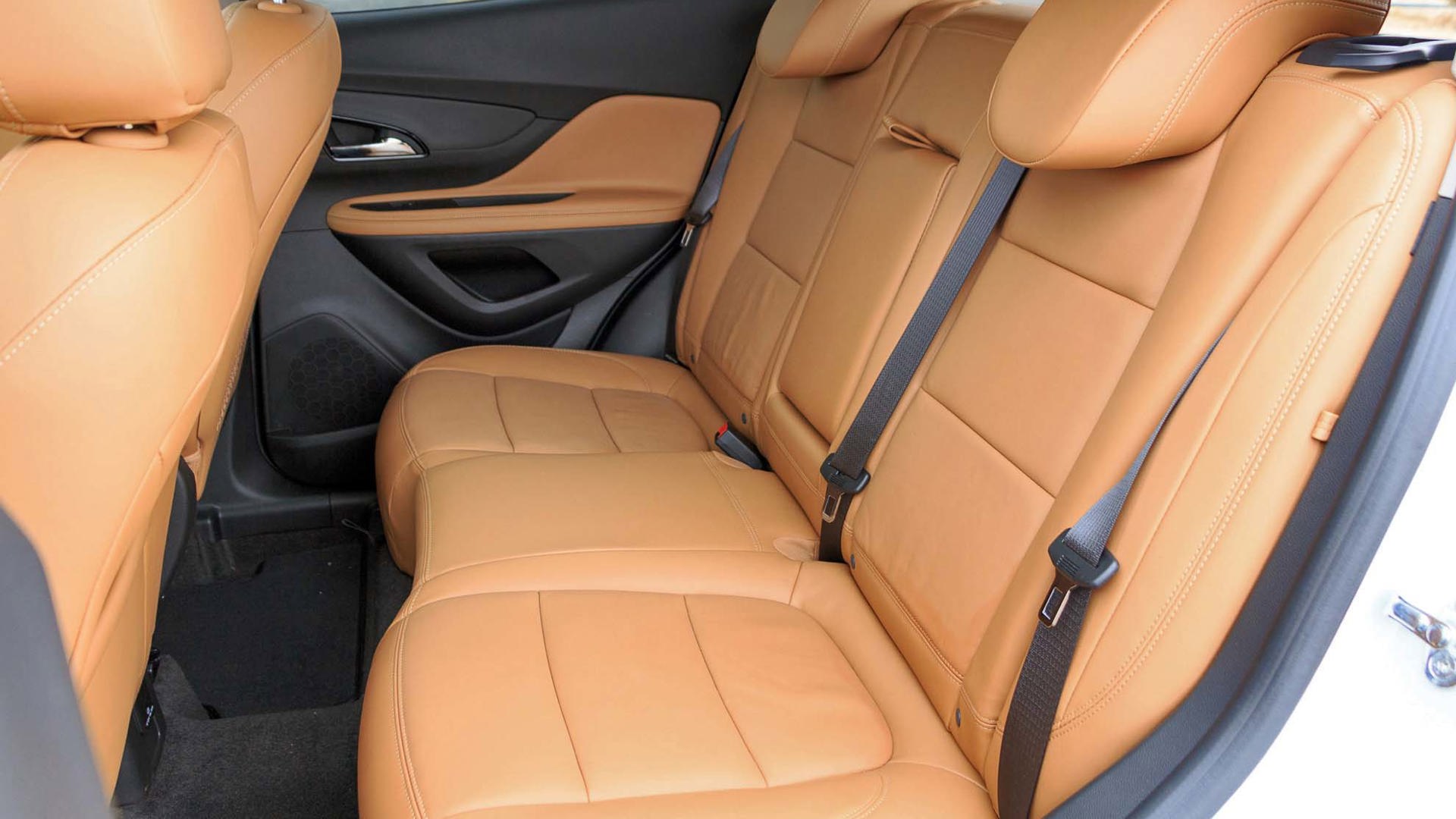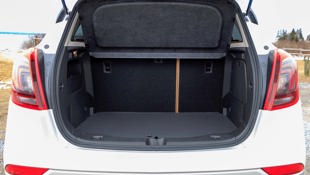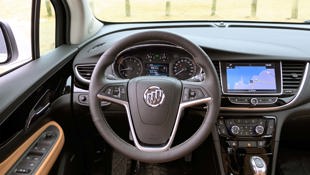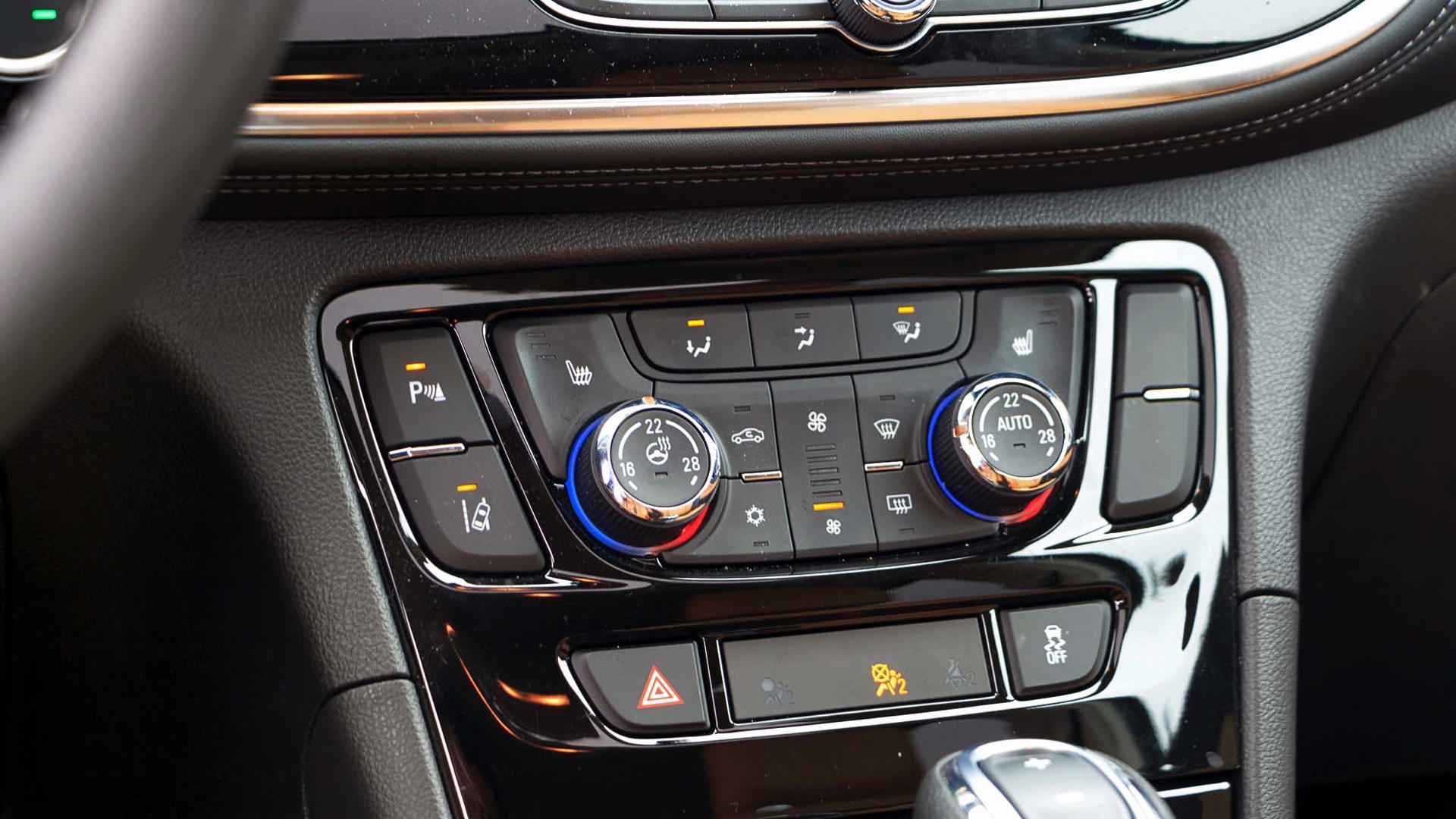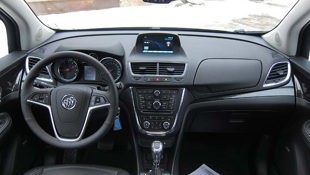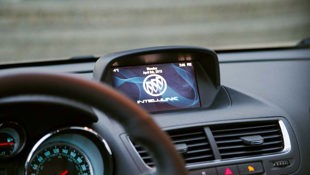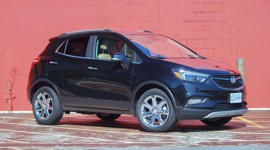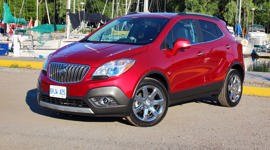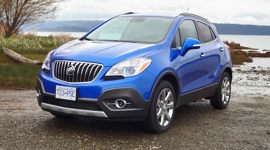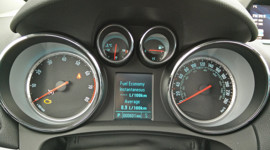Vehicle Type
Small crossover
History/Description
Targeting an expanding hot spot in the Canadian market, the Buick Encore hit Canadian dealers for 2013 as the brand’s first small crossover.
An enormous cruiser the Encore was not – though its small footprint attracted many a shopper looking to downsize from a larger SUV or minivan, or move from a small car into an all-wheel-drive-equipped machine that sits a little higher off the road.
Owners say the Encore is easy to see out of, manoeuvre, and park. Feature-content favourites include the Encore’s heated seats, Bose stereo system, factory-installed remote starter, and rain-sensing wipers.
Elsewhere, look for a back-up camera, leather seating, a self-dimming rear-view mirror, and the latest in integrated OnStar, smartphone, and Wi-Fi connectivity. If you’re after Android Auto or Apple CarPlay, you’ll need a 2017 or newer unit.
Engines
All Encores came with a 1.4L turbocharged four-cylinder engine, good for 138 hp. The Encore Sport Touring arrived in 2016, bringing a new version of the 1.4L powerplant with 153 hp and more fuel-saving technology. This higher-performing engine then went on to appear elsewhere in the model range.
An automatic transmission and front-wheel drive were standard, while all-wheel drive was available on select models.
What Owners Like
Owners tend to report that the Encore is cheerful to drive, easy to zip around in, flexible, and sufficiently roomy for four average-sized adults and a load of groceries. Tech-based features are easy to interface with, and many owners appreciate the added confidence of the OnStar system when travelling. In terms of all aspects of delivering a comfortable, relaxed, and easy-driving experience, the Encore seems to have impressed its owner community.
What Owners Dislike
Complaints tend to be space-related, with some families or couples quickly outgrowing Buick’s smallest vehicle and looking for an upgrade. Some drivers wish for a touch more power, too.
Pro Tip: Do a Diagnostic Scan
Consider protecting yourself ahead of your purchase by having the vehicle you’re test-driving subjected to a diagnostic scan of its computer systems – especially if you see a check-engine light (CEL) or some other warning light or message in the instrument cluster. This diagnostic scan can quickly reveal potential trouble.
The Test Drive
Big Problem First
The positive crankcase ventilation (PCV) system is a rarely mentioned pathway within the engine that deals in the transport of hot and steamy gasses. In the Buick Encore, it’s also a potential trouble spot, and even resulted in a class-action lawsuit you can check out here, complete with full technical details of the issue.
If there’s an issue with the PCV system, it could cause problems ranging from burning oil to sluggish performance, warning lights, or even engine failure. Any remaining powertrain warranty covers this issue in affected vehicles. Not all – or even most – Buick Encores will experience this issue.
Still, religious monitoring of oil levels is highly advised. Report any issues to your dealer right away. Note that the vehicle you’re considering may have already had this component replaced or repaired.
Check for Leakage
Some owners have reported annoying dribbles from their Encores, with various sources reported. Check the vehicle’s parking space for any clues. Owners have reported oil leaks, all-wheel-drive transfer case leaks, and even coolant leaks.
Though rare against total sales volumes, these complaints mean test-driving shoppers should be on the lookout for visible evidence of a leak, warning lights, burning smells, and low fluid levels apparent on a check under the hood. Leaks like these can be easily spotted and traced by a professional during a pre-purchase inspection (PPI).
Leaks like these are typically covered under powertrain warranty, if the vehicle you’re considering is still within the warranty period.
Protect Your Money
Approach any used Encore you’re test-driving assuming its tires, brakes, fluids, and filters need to be replaced until you’ve got proof to the contrary. Ask a knowledgeable friend or technician for help if you’re not sure how to check these areas yourself. Most sellers aren’t trying to stick you with an upcoming repair bill, but it pays to be careful.
Turbocharger Health
A properly maintained and properly built turbocharger should last the life of the vehicle – though poor maintenance practices by past owners can shorten its lifespan. To protect yourself, ensure that all oil changes have been completed in a timely manner using only factory-approved oil and filters, and have the turbocharger inspected by a professional for signs of visible leakage or wear if you have any concerns, especially on a higher-mileage unit.
Before your drive, call the seller to request the vehicle isn’t started prior to your arrival. Carefully touch the muffler to confirm it’s cold. Next, start the engine and let it idle for three to five minutes until it reaches optimal operating temperature. At this point, a thick plume of white, oily-smelling smoke can indicate a bad internal seal within the turbocharger, which could be a costly repair.
Final Checks
Two more general used-vehicle checks are relevant to specific features and systems in the used Buick Encore. First, run all high-tech features through their paces. Pair your phone and place calls; confirm the navigation system works as it should, and displays your position properly on the on-screen map; and ensure all steering-wheel-mounted buttons work properly, too.
Note that touchscreen glitches can sometimes be fixed with a hard reset, but may be an indication of bigger trouble. Don’t forget to try each available remote keyfob for functionality, and to stop and restart the engine several times on your test drive, noting that a slow-to-start engine may indicate a problem with the vehicle battery, key-fob battery, or ignition switch.
The Verdict
The majority of Encore owners seem to have few regrets about their purchase, though potential issues with the PCV system and various fluid leaks are a good reason to shop carefully, and to closely consider a professional PPI to be safe.
Here’s a list of recalls.
Safety Ratings
NHTSA: 5-Star (2016)
IIHS: Top Safety Pick (2016)
